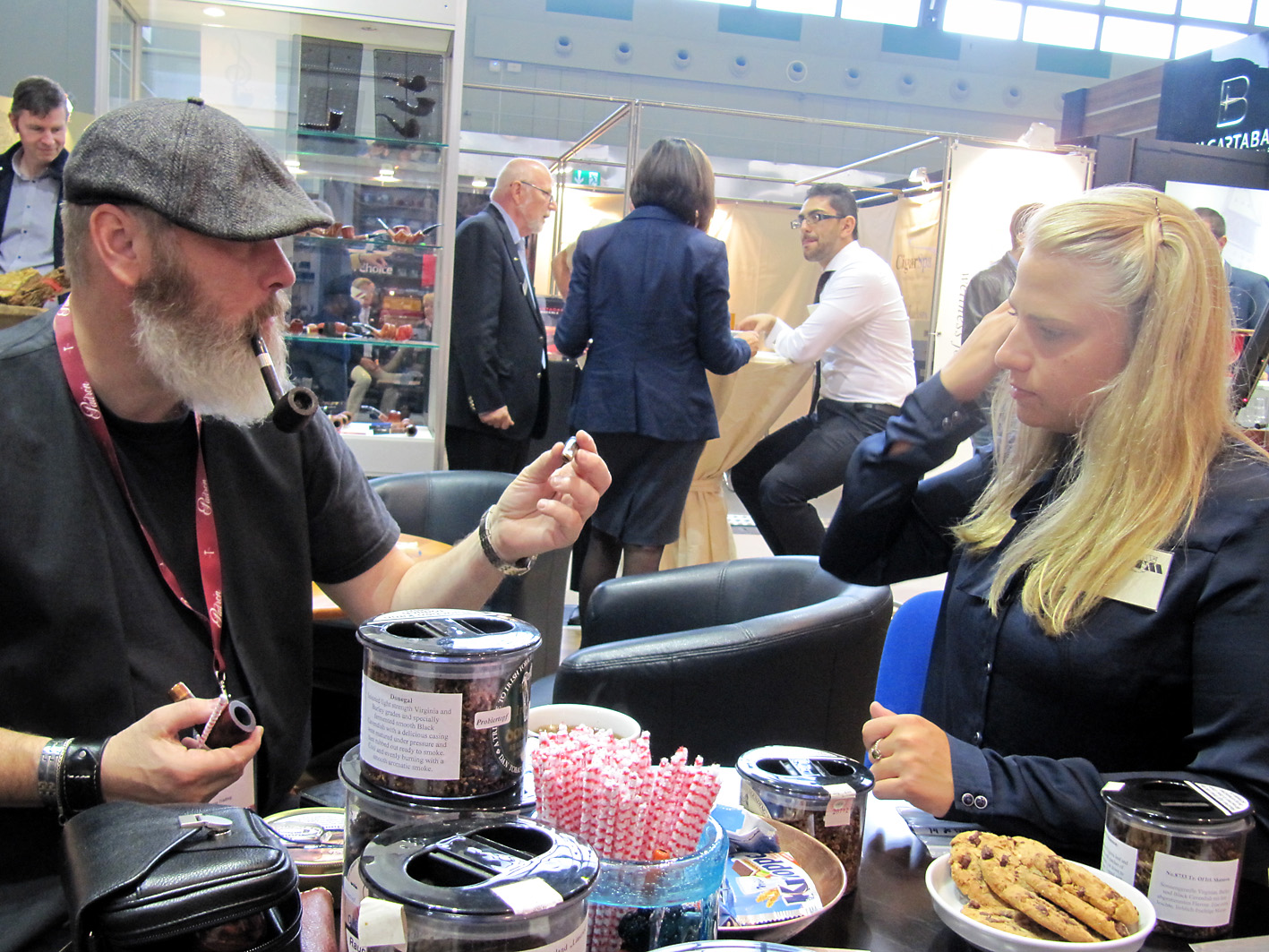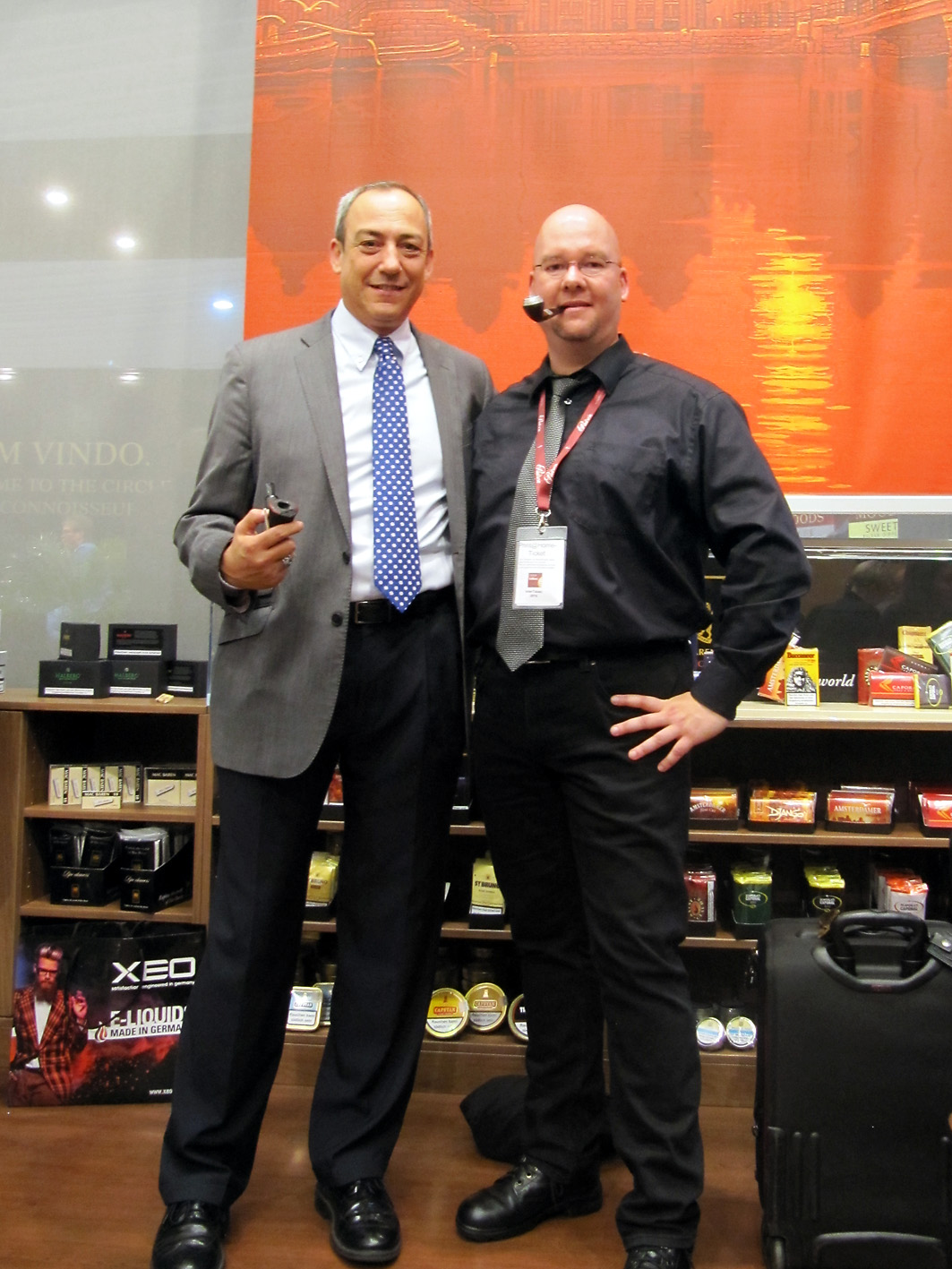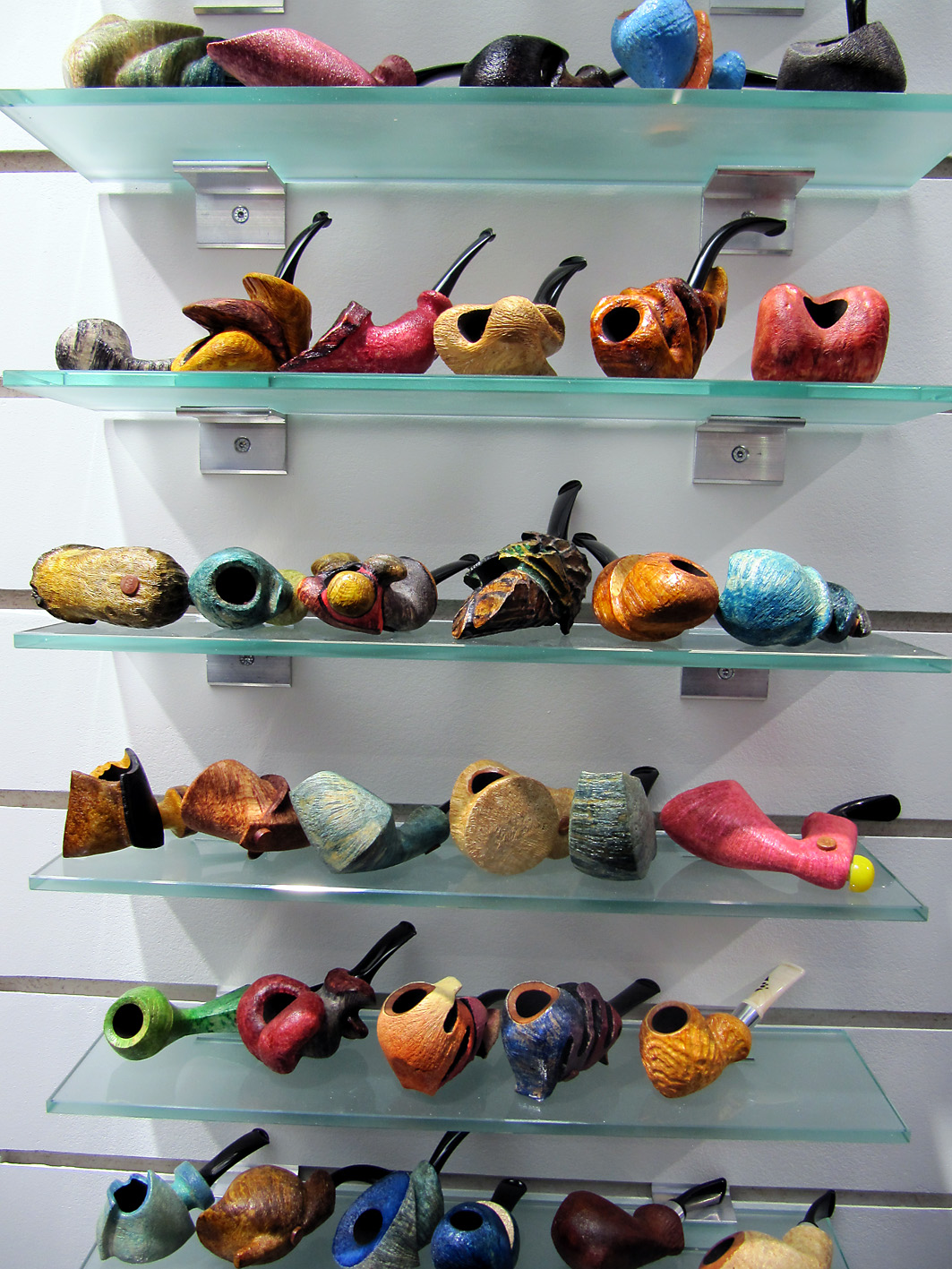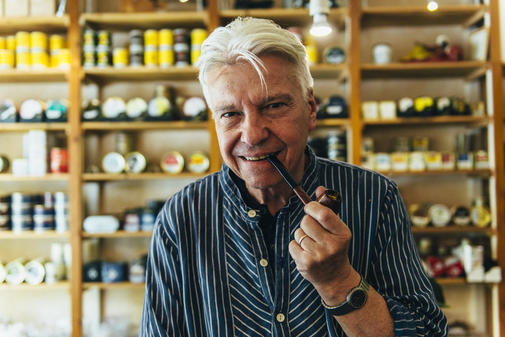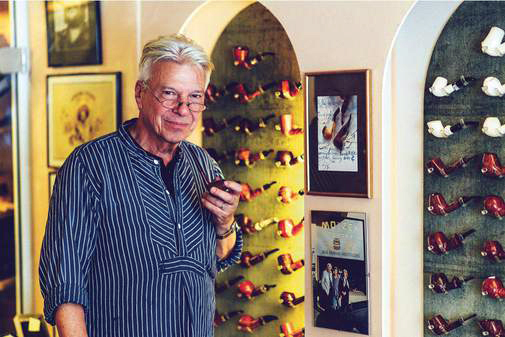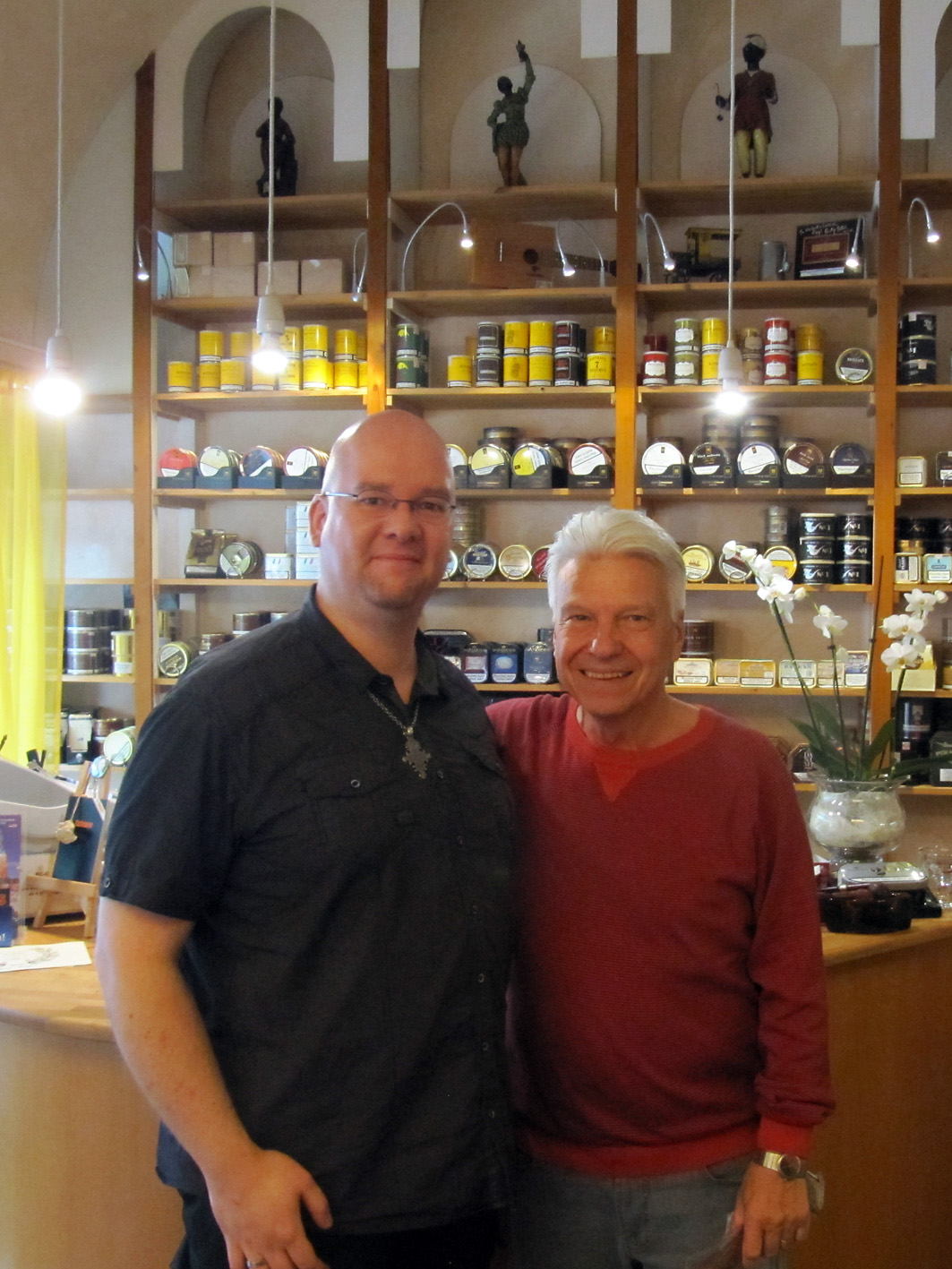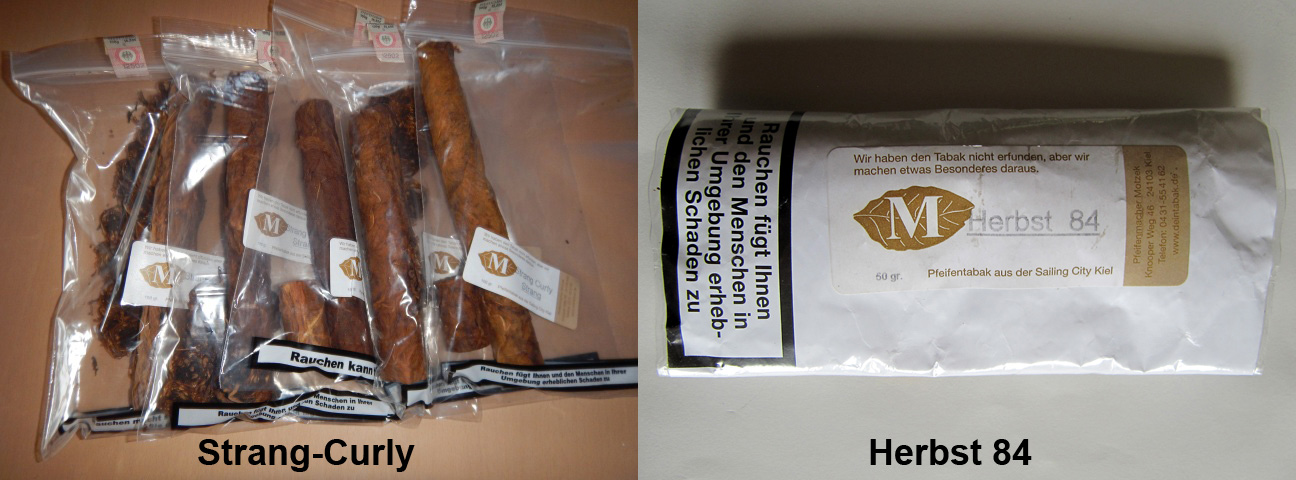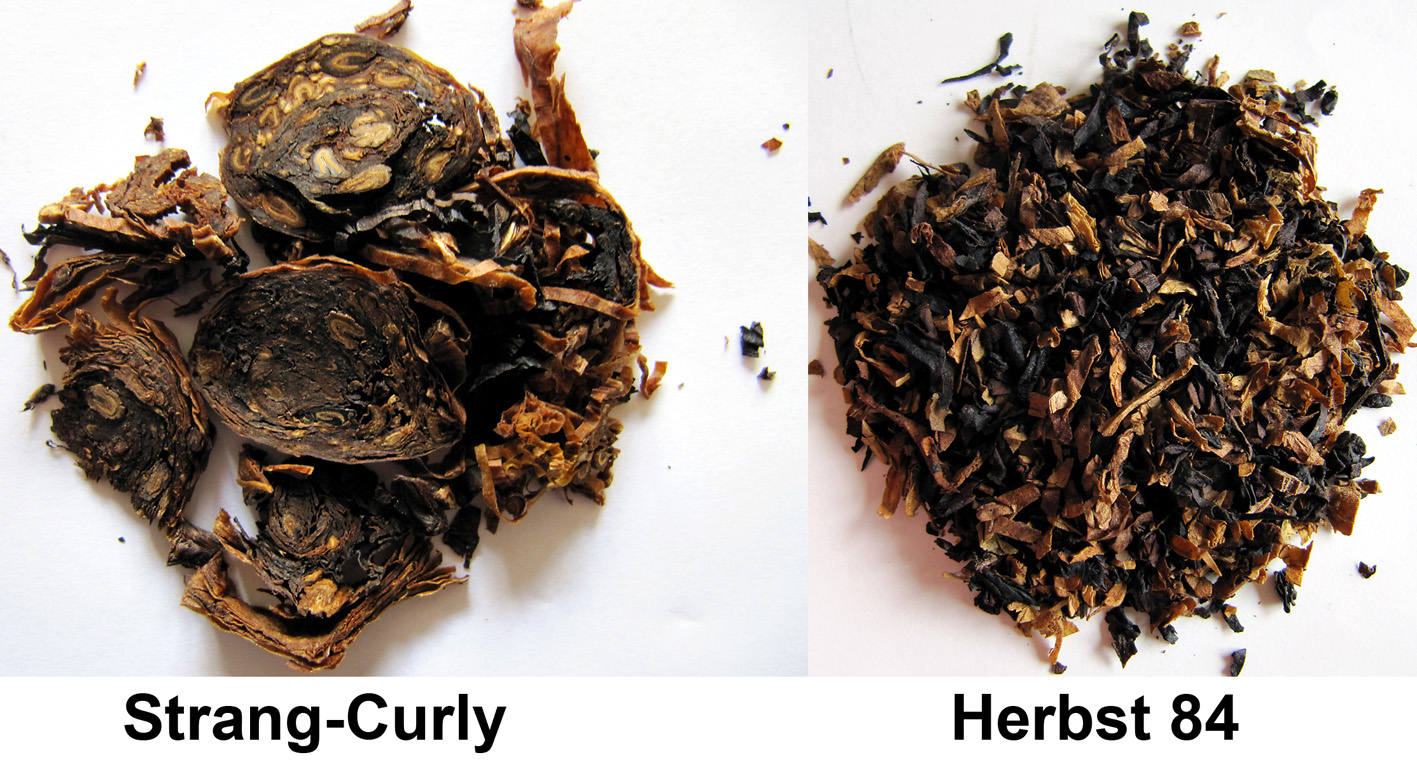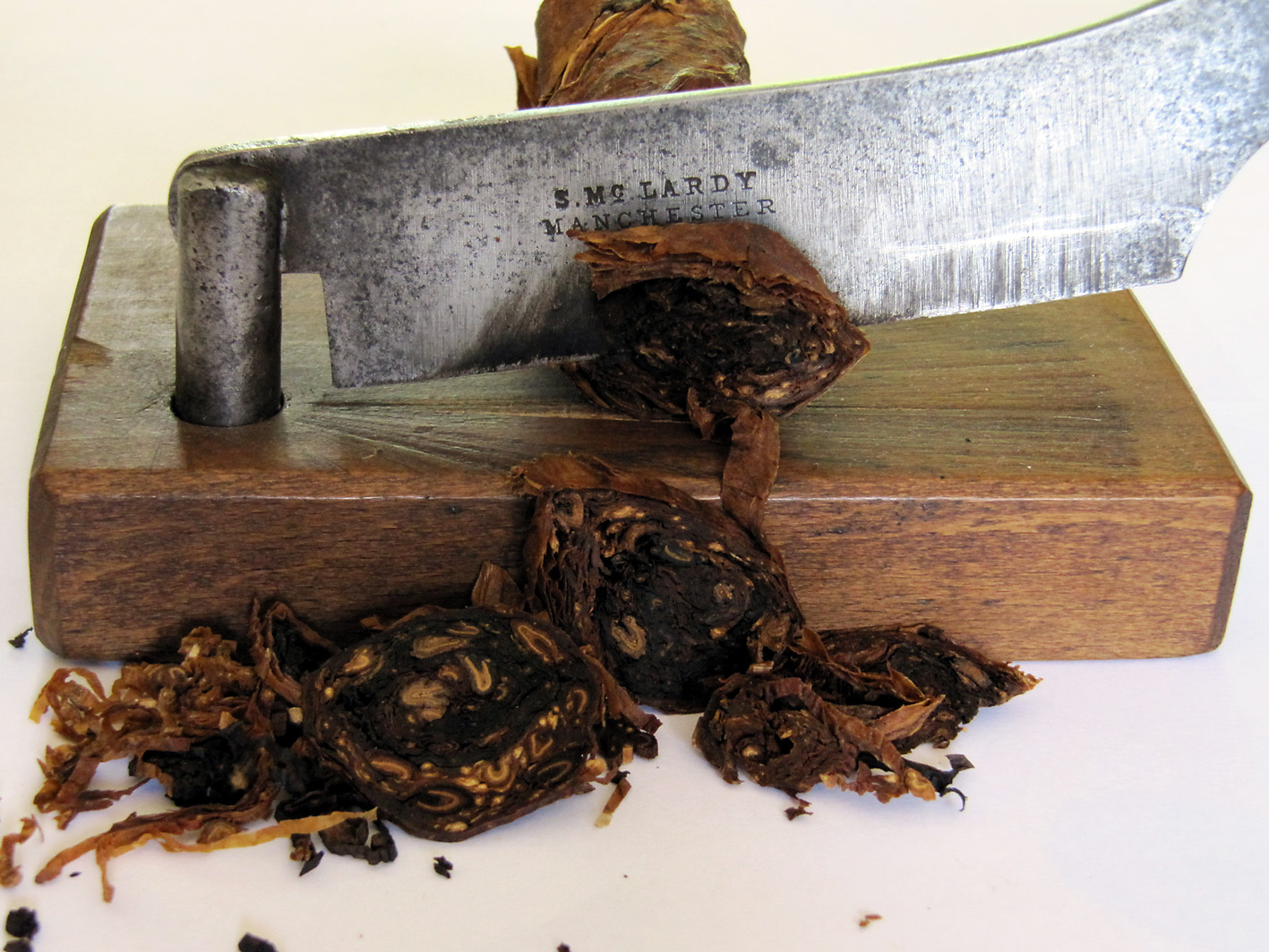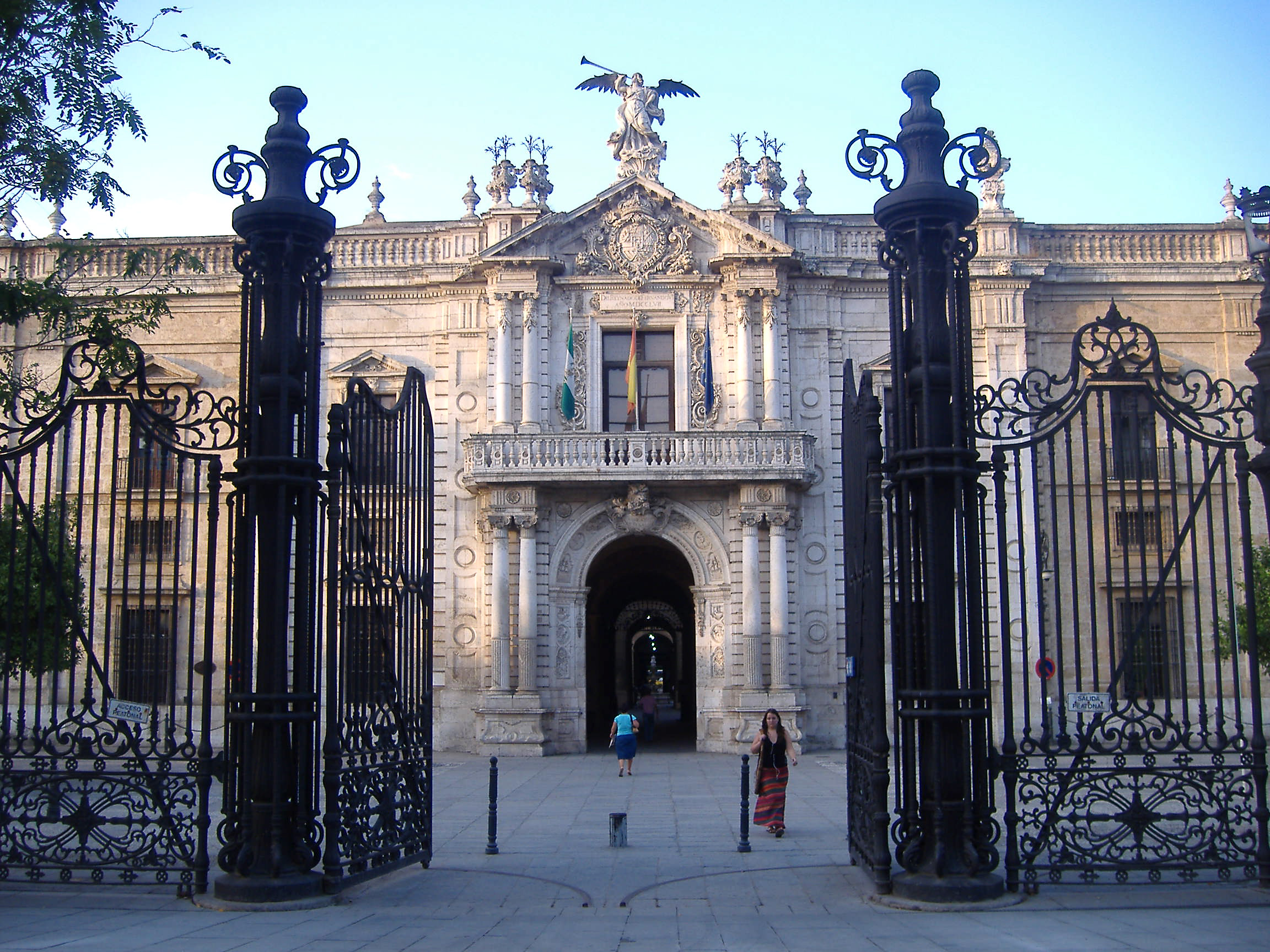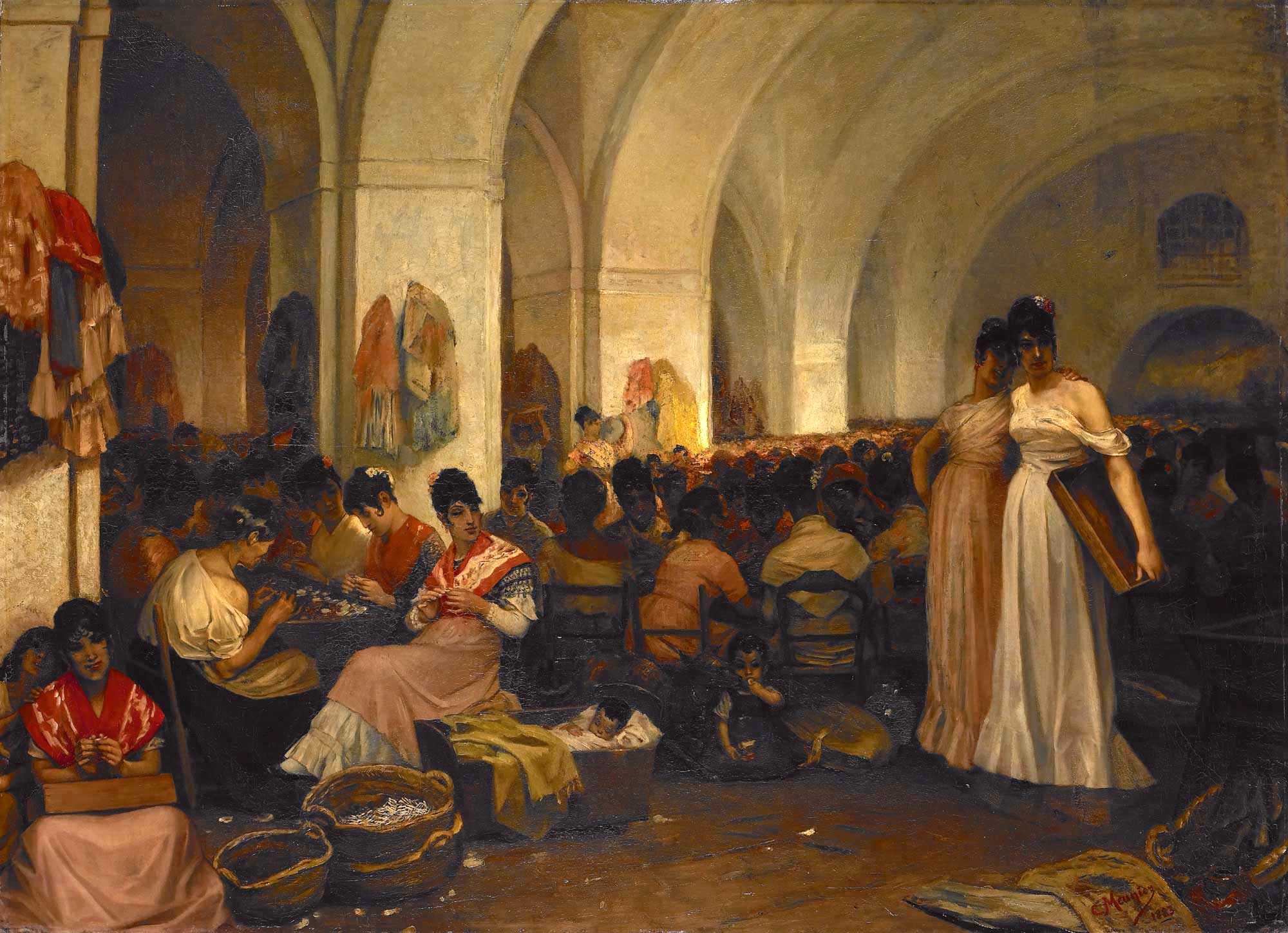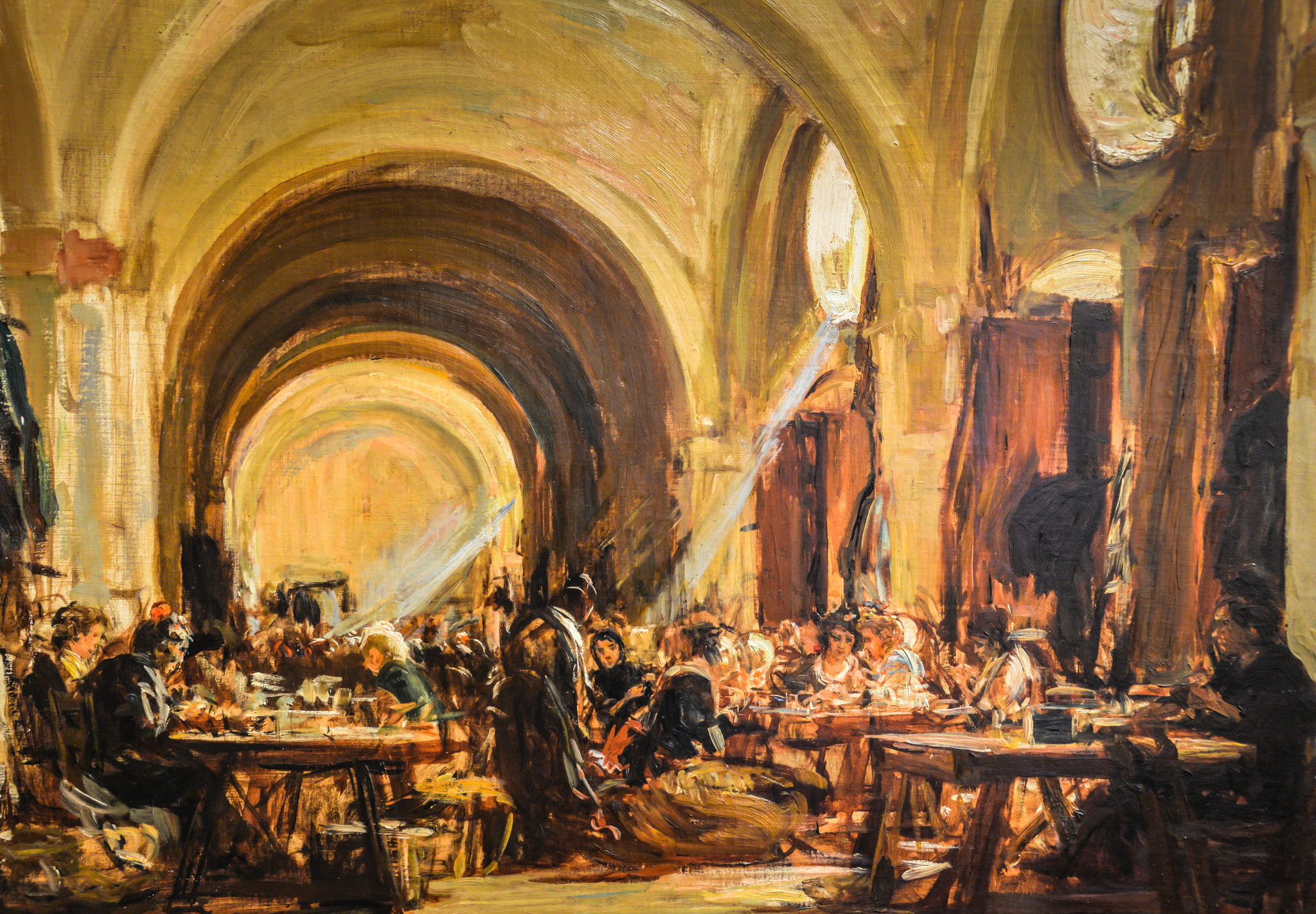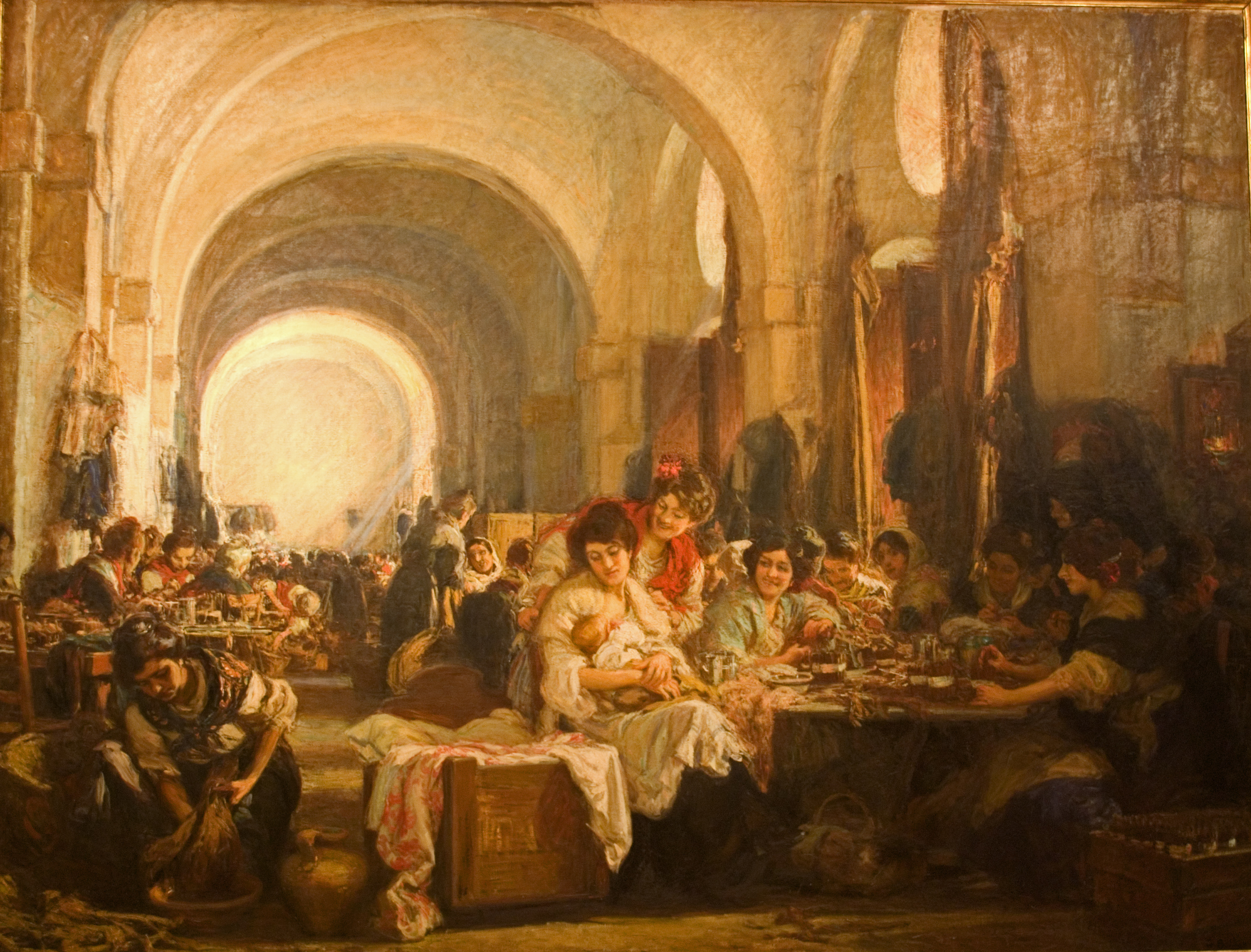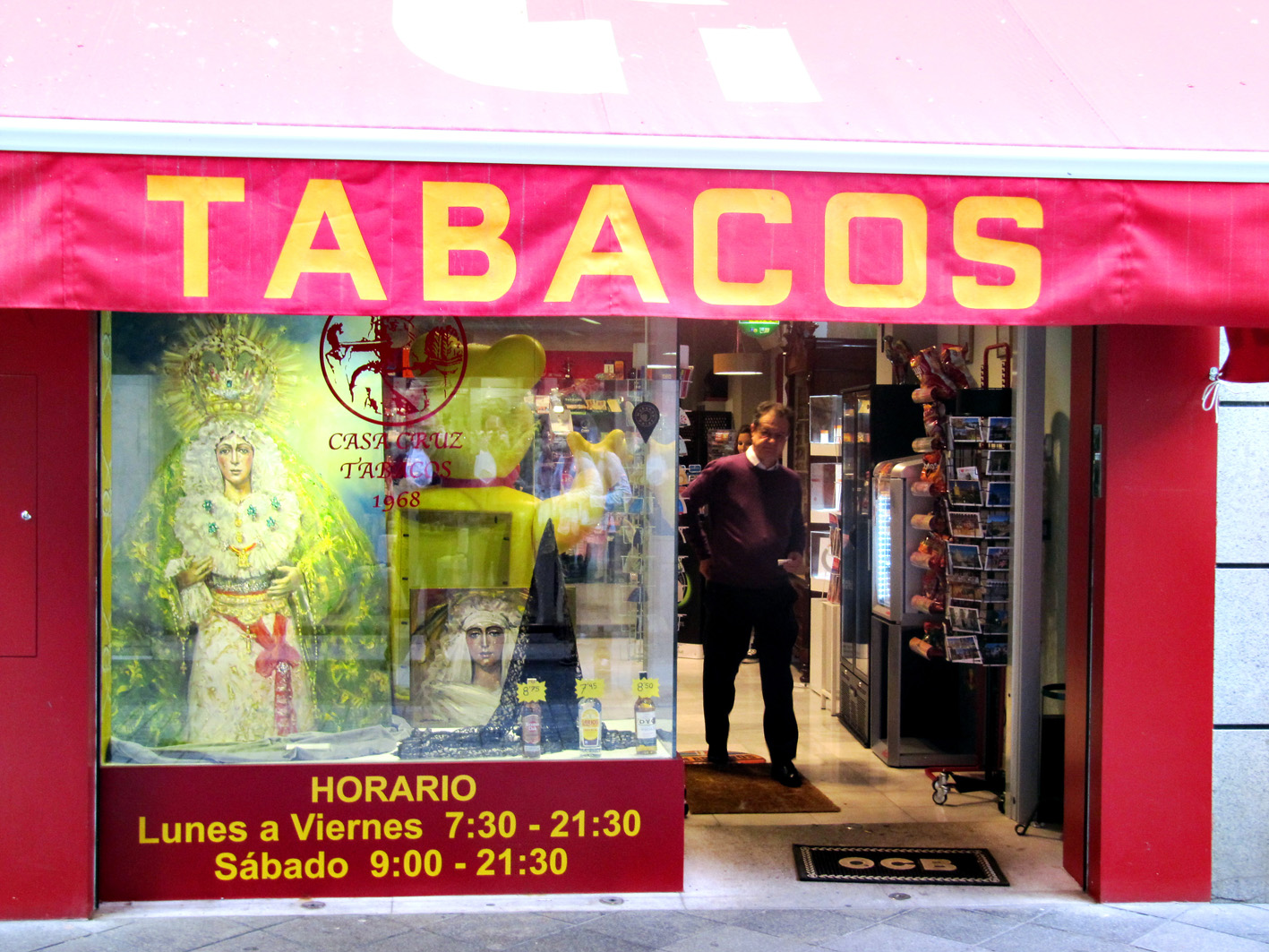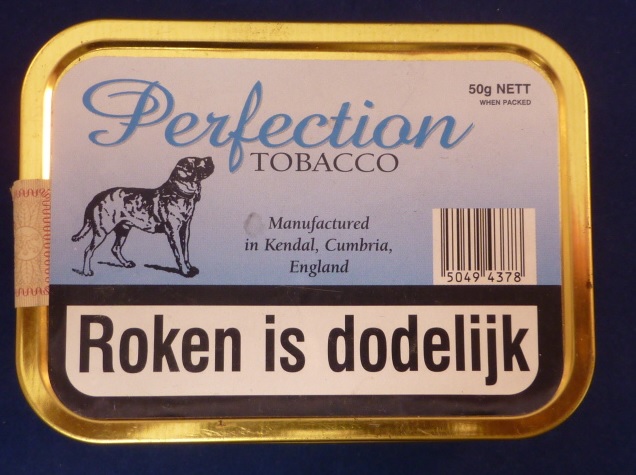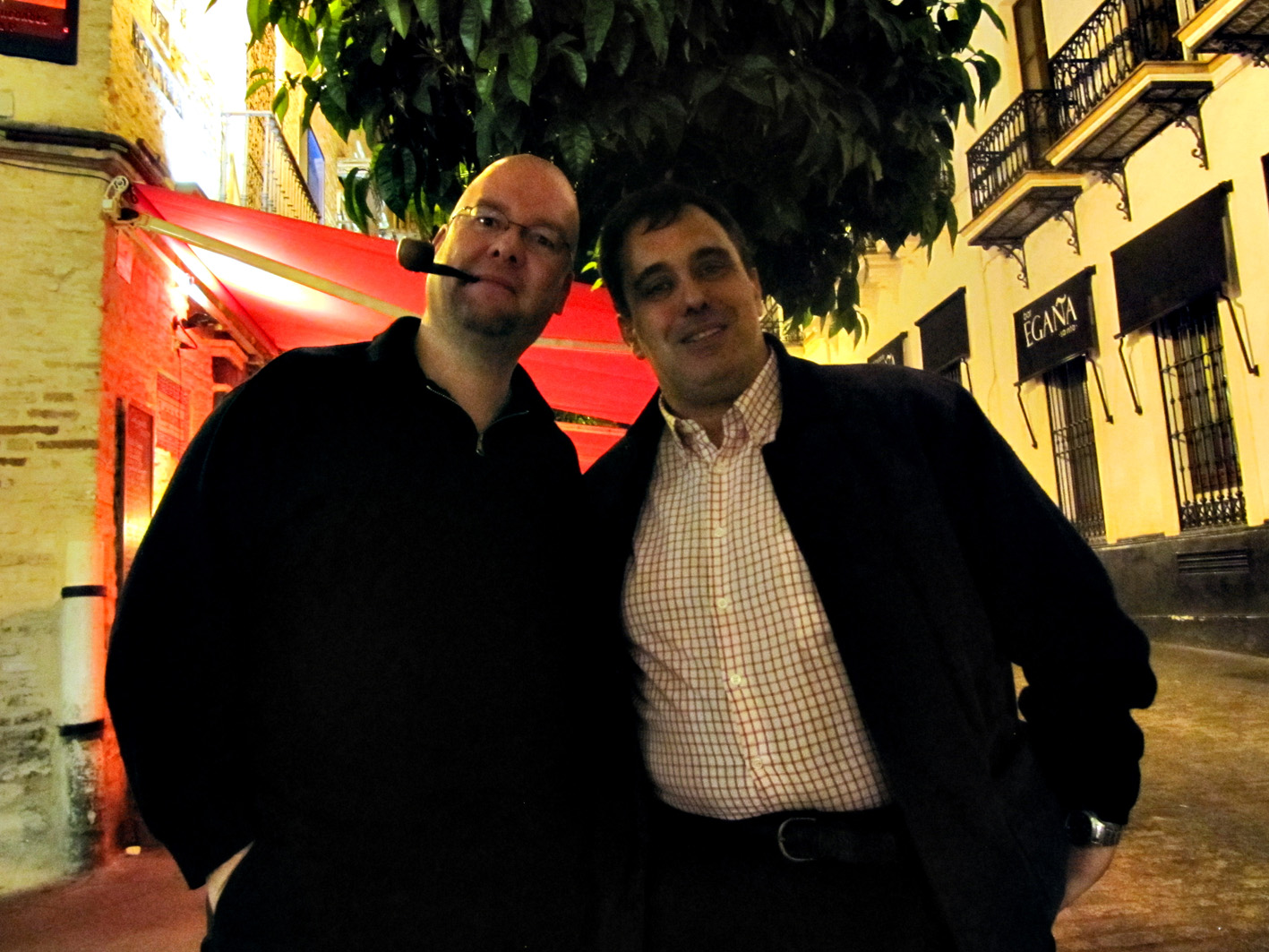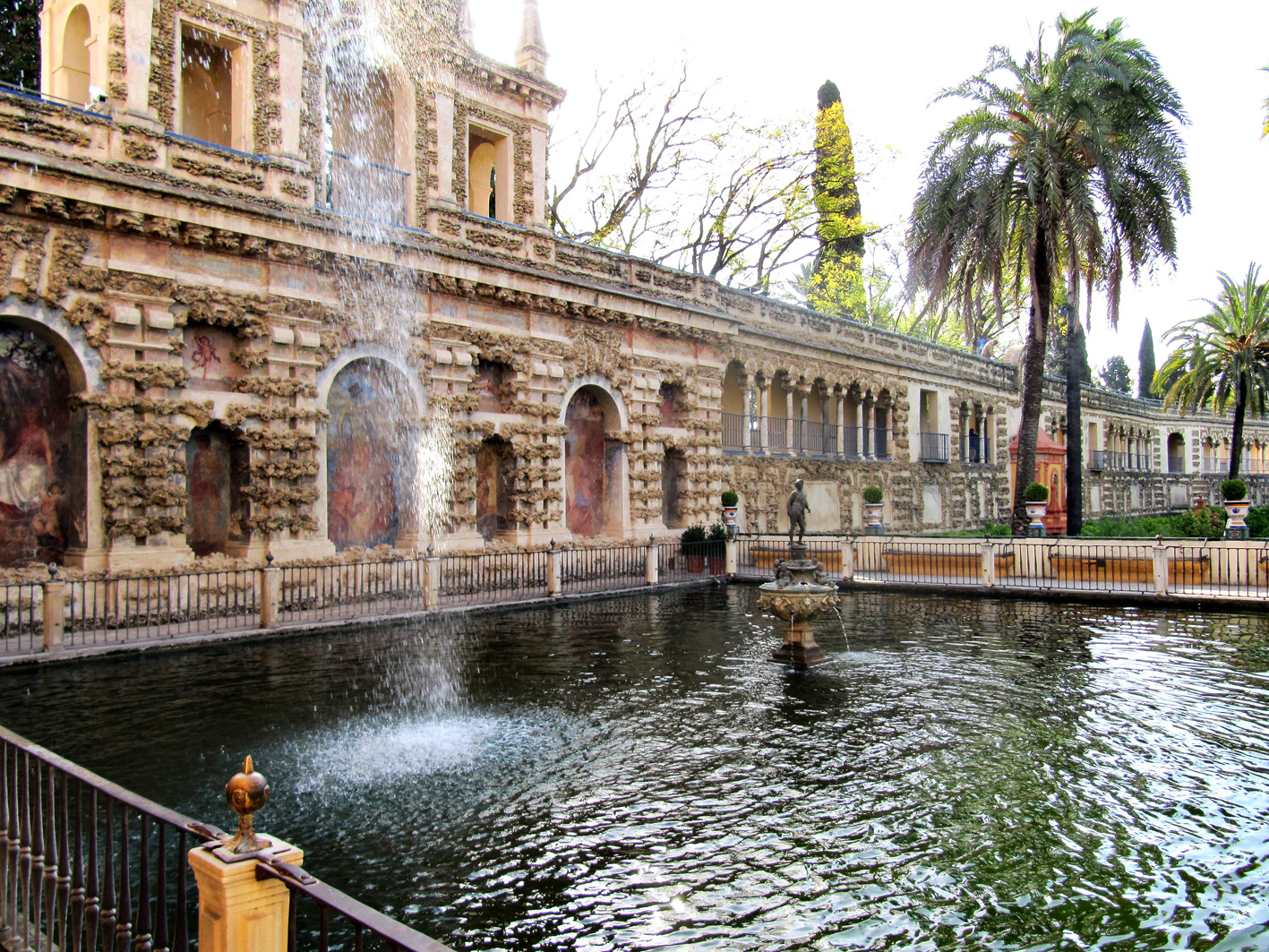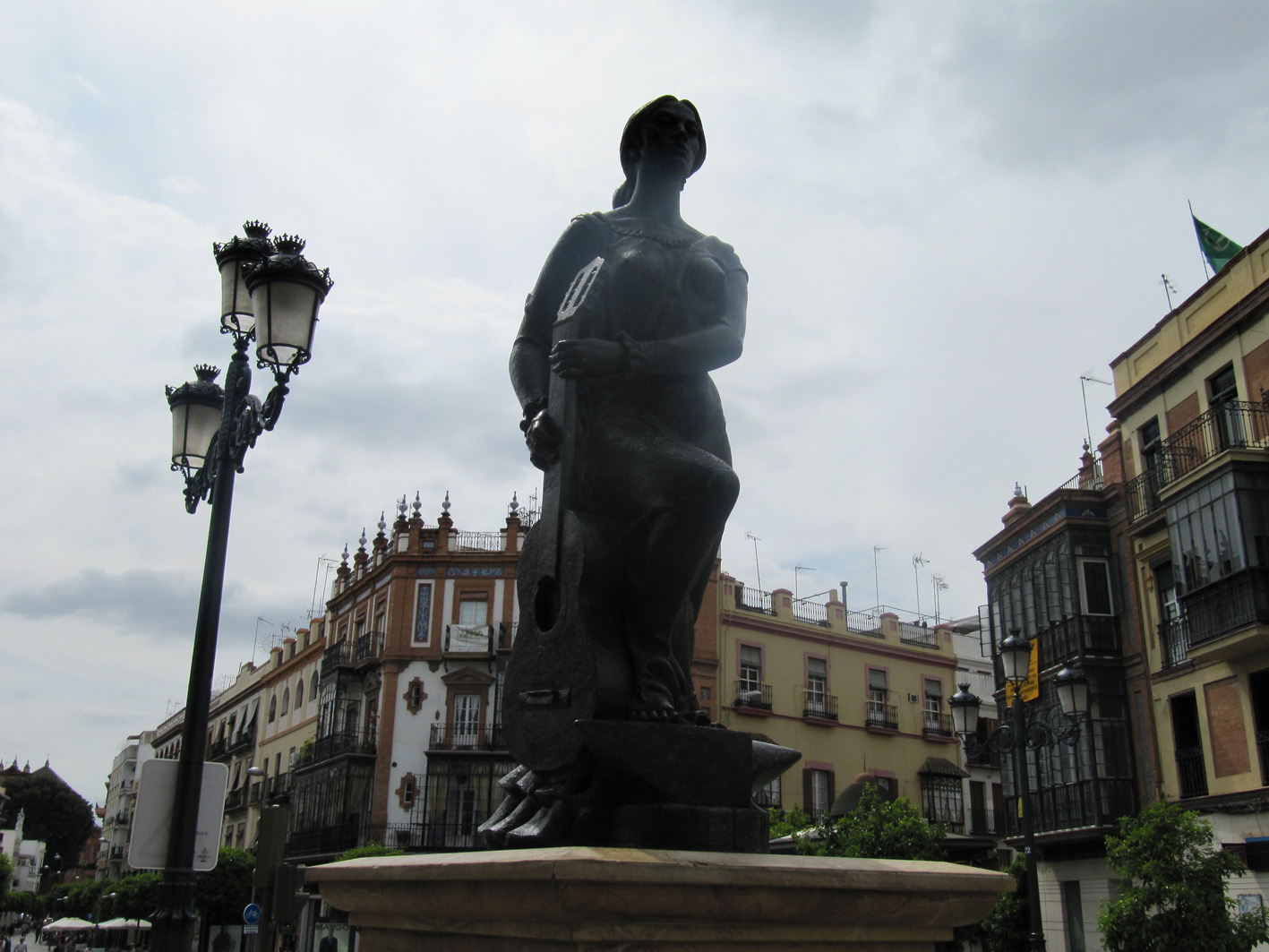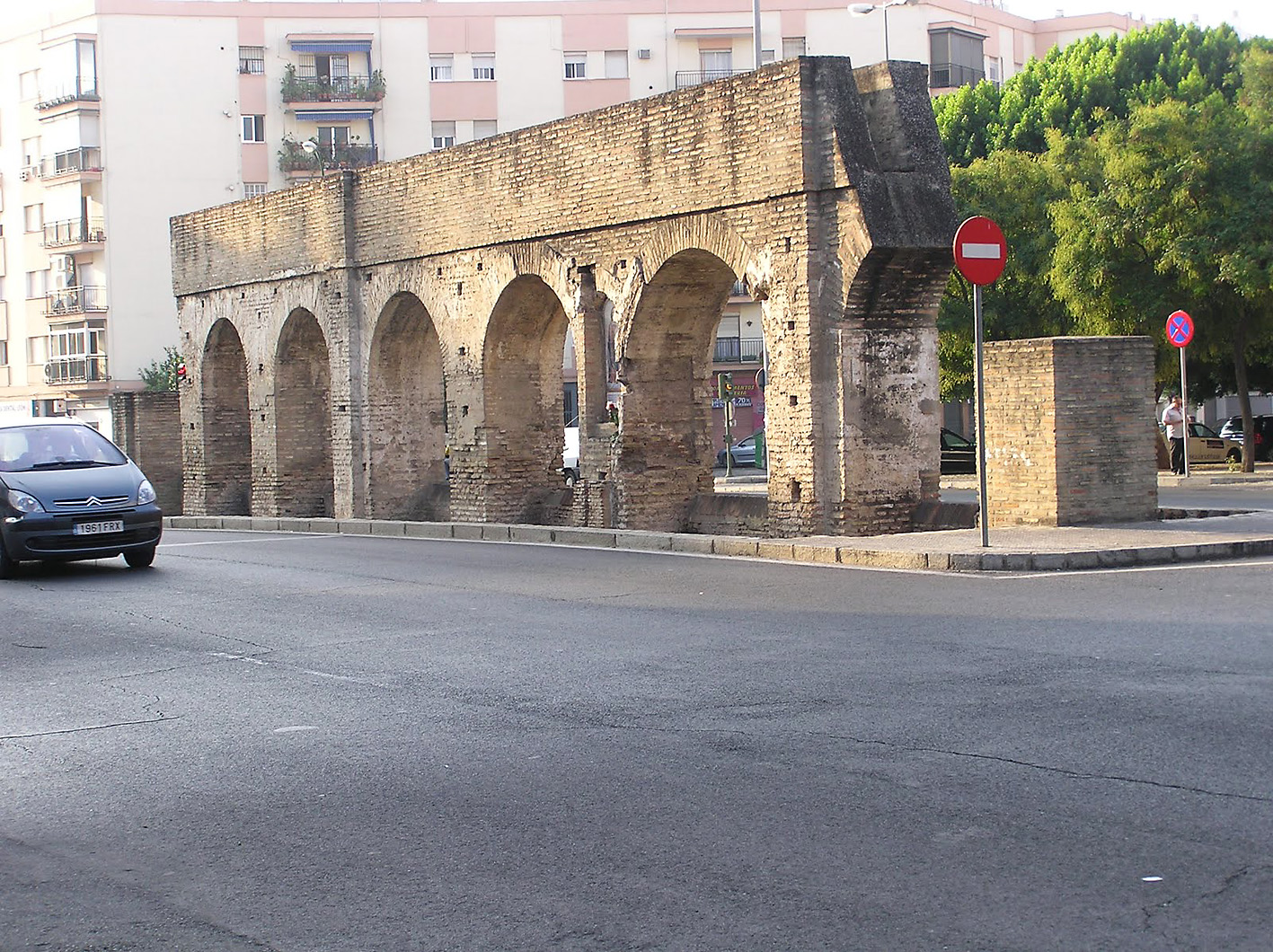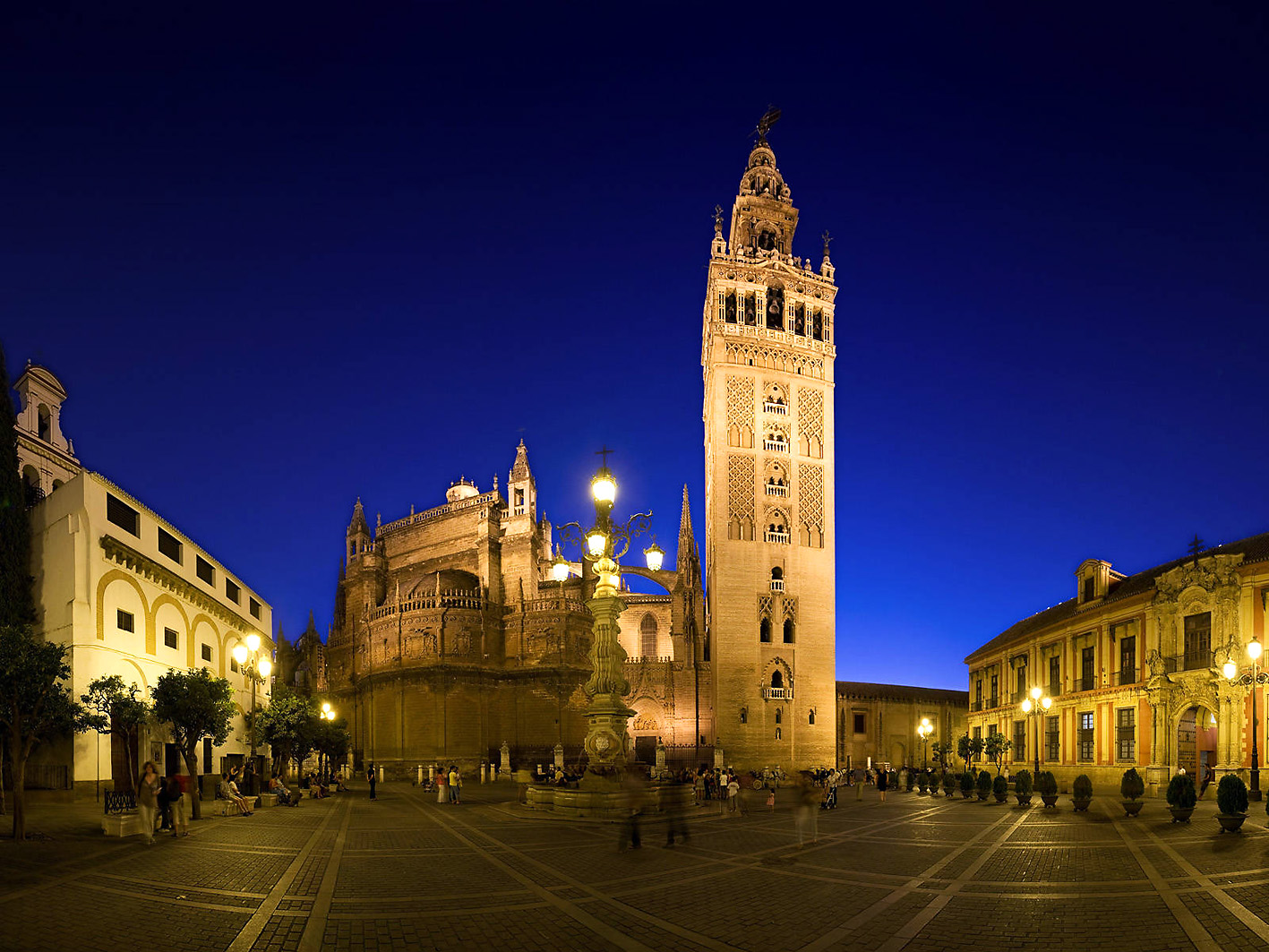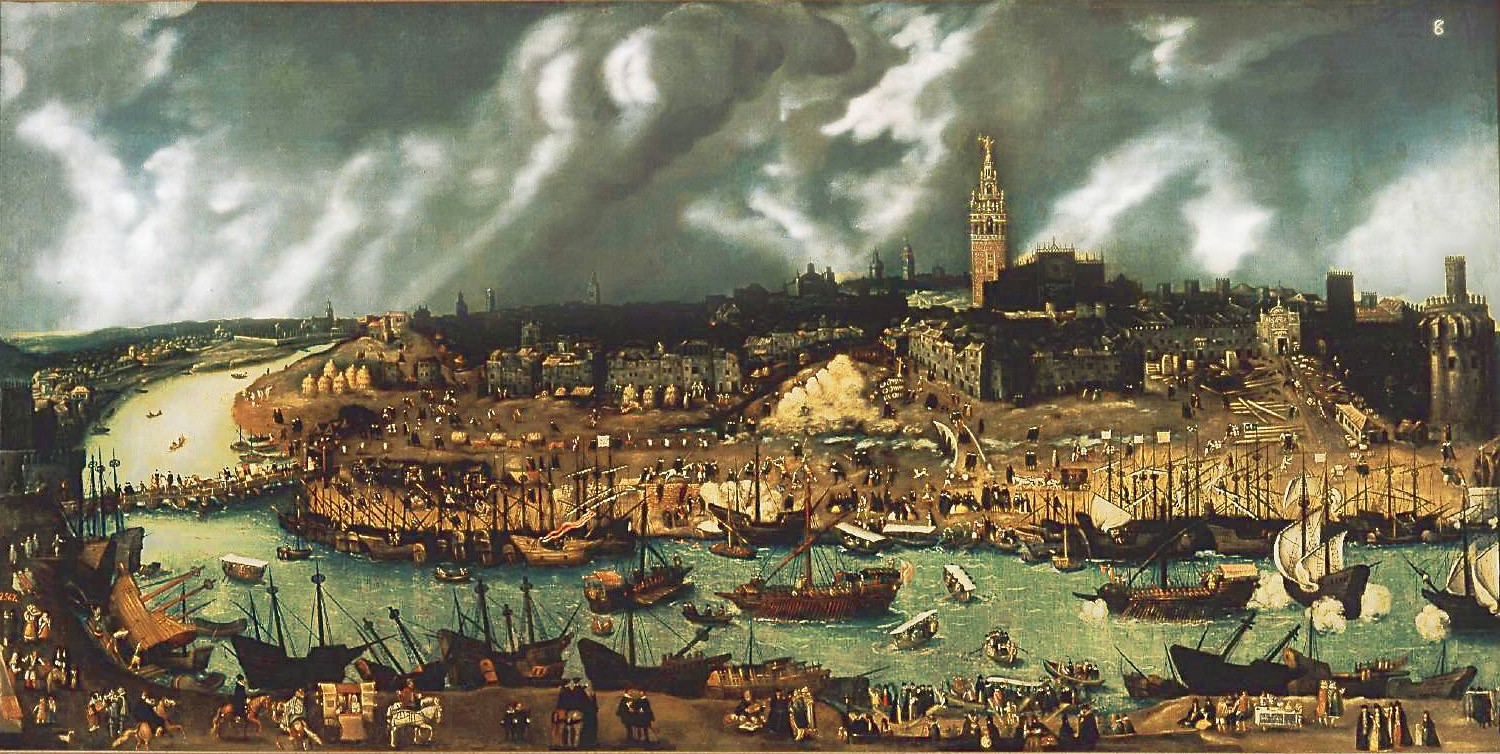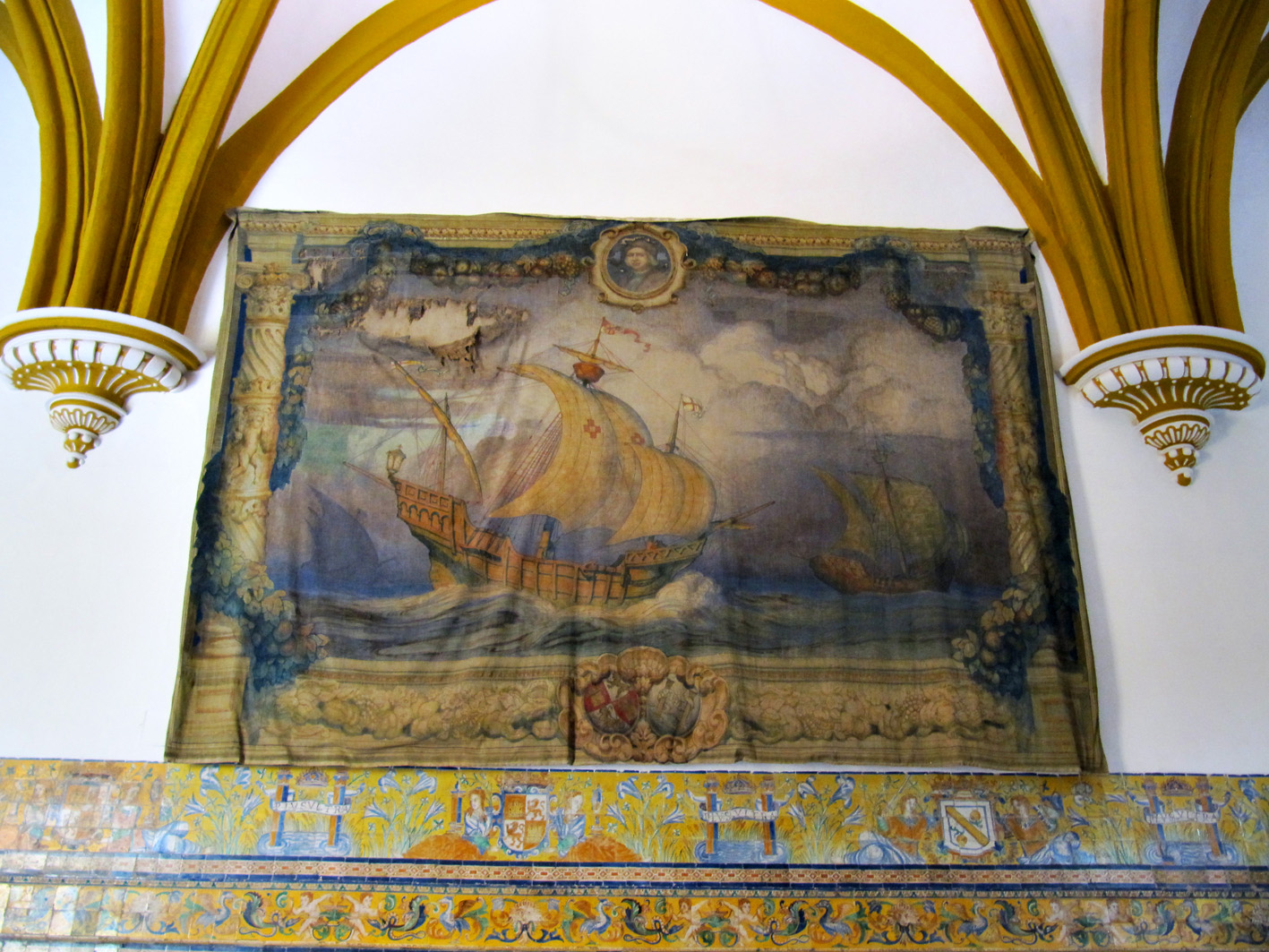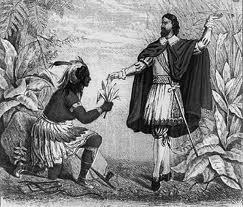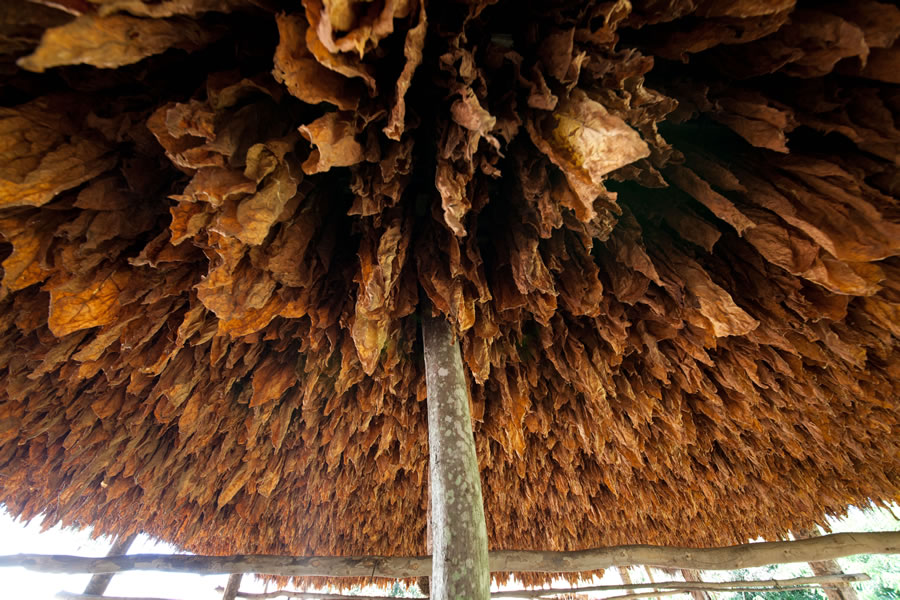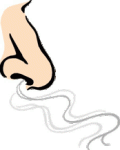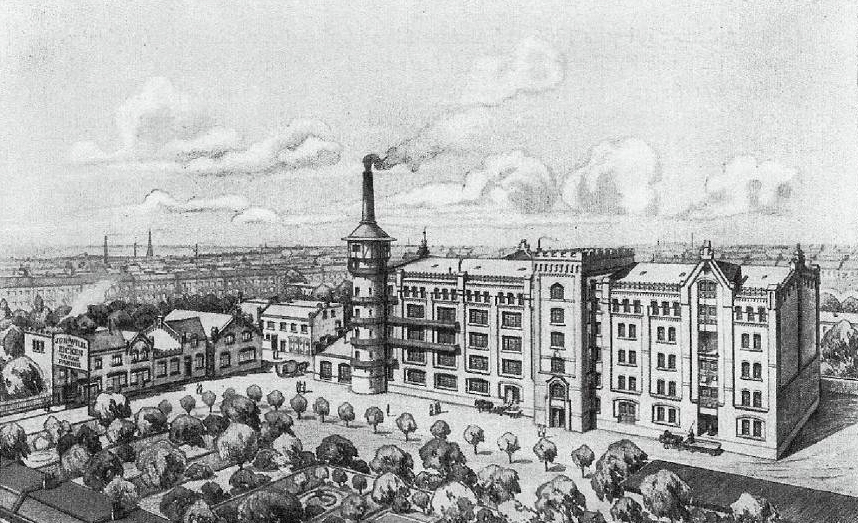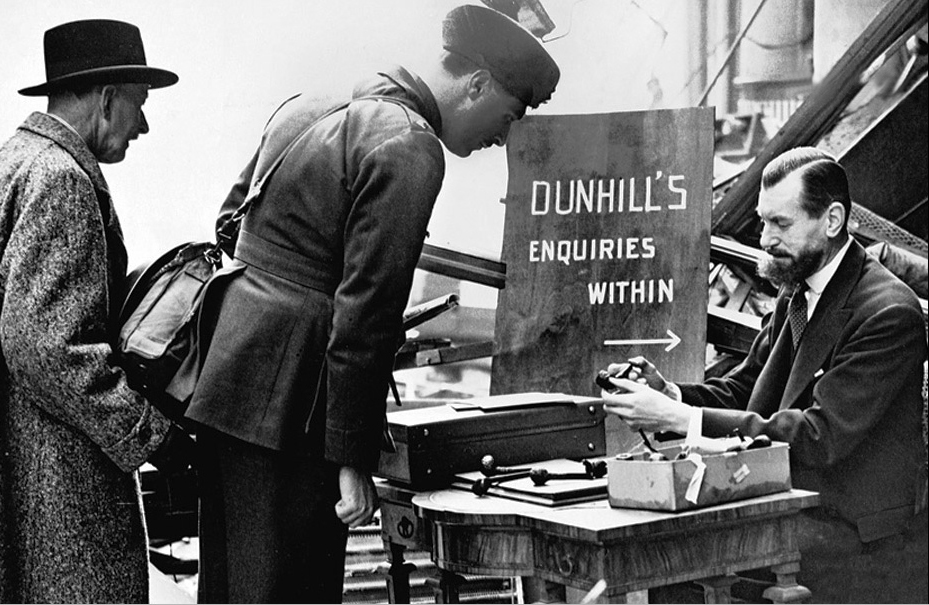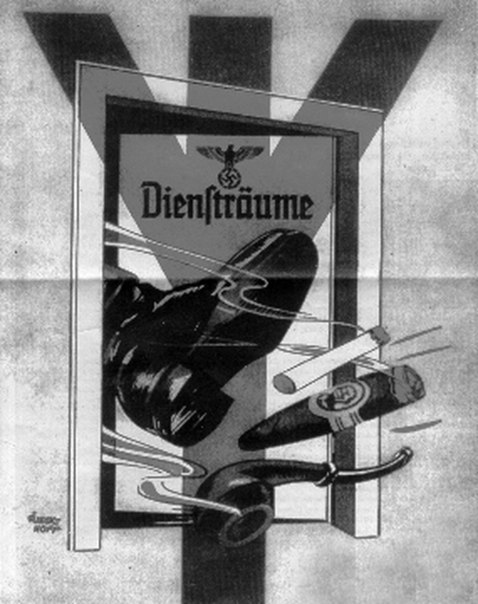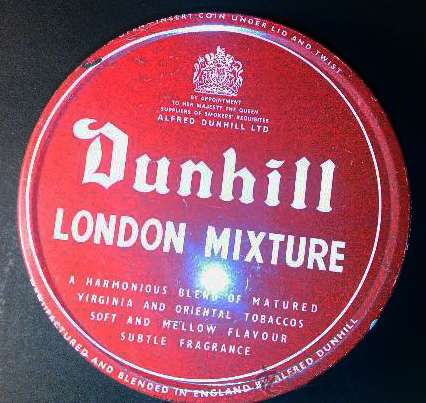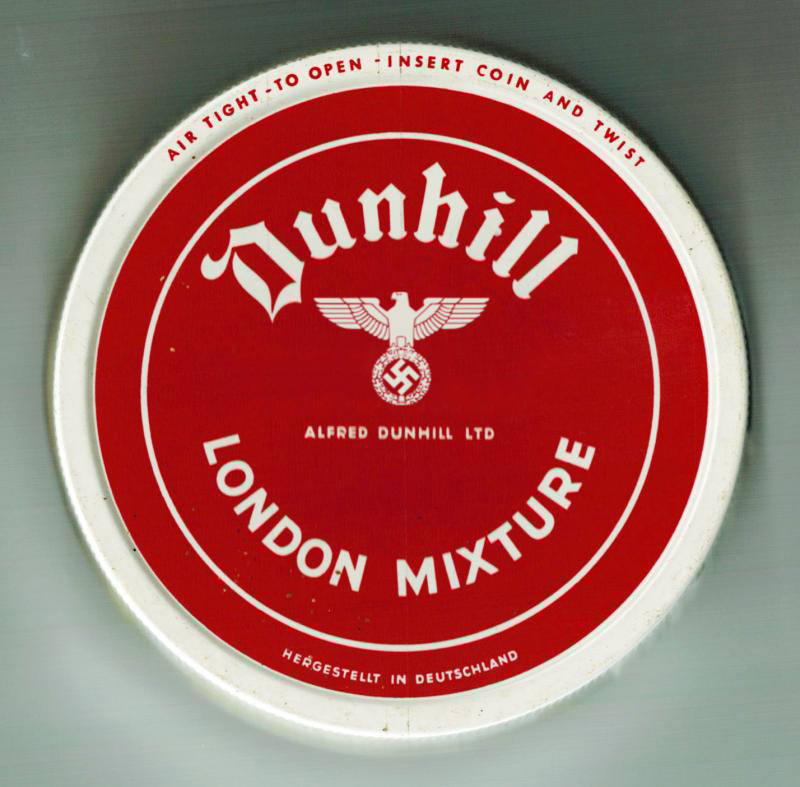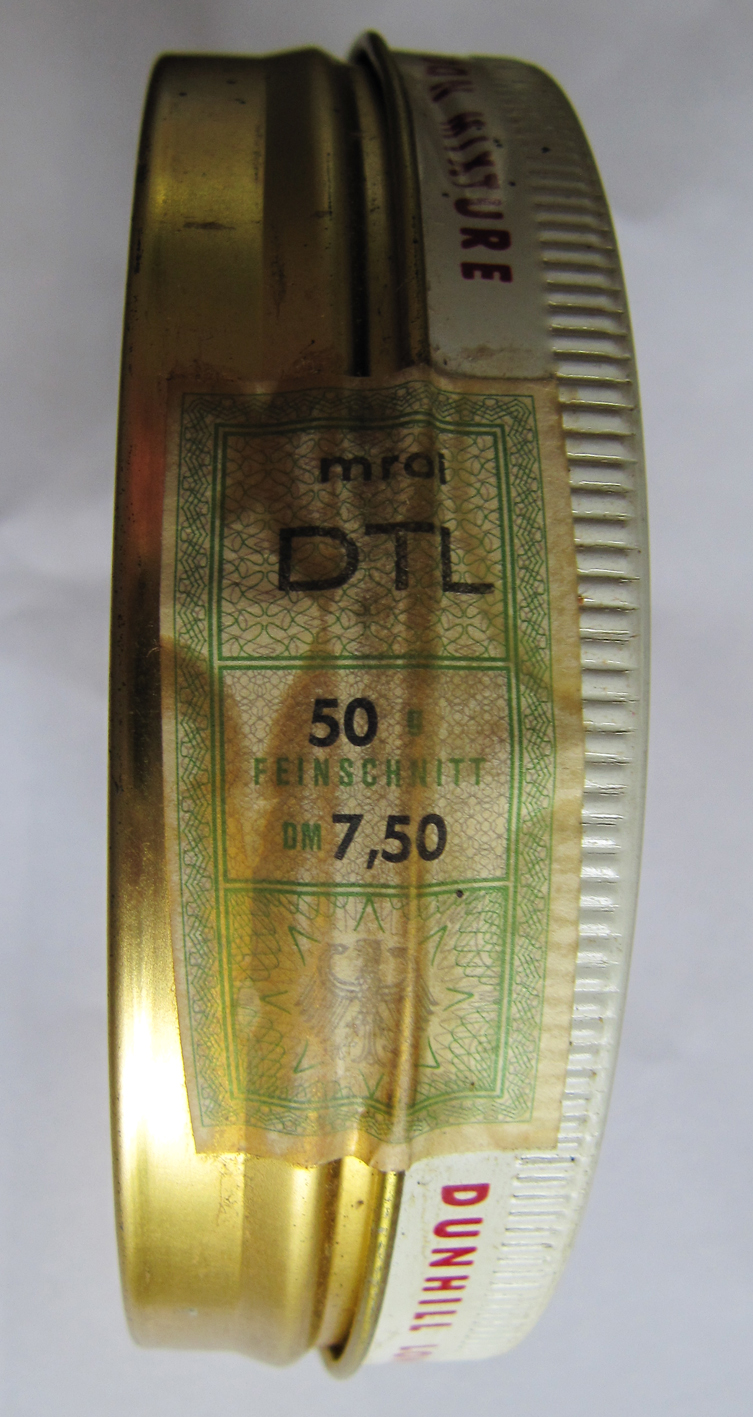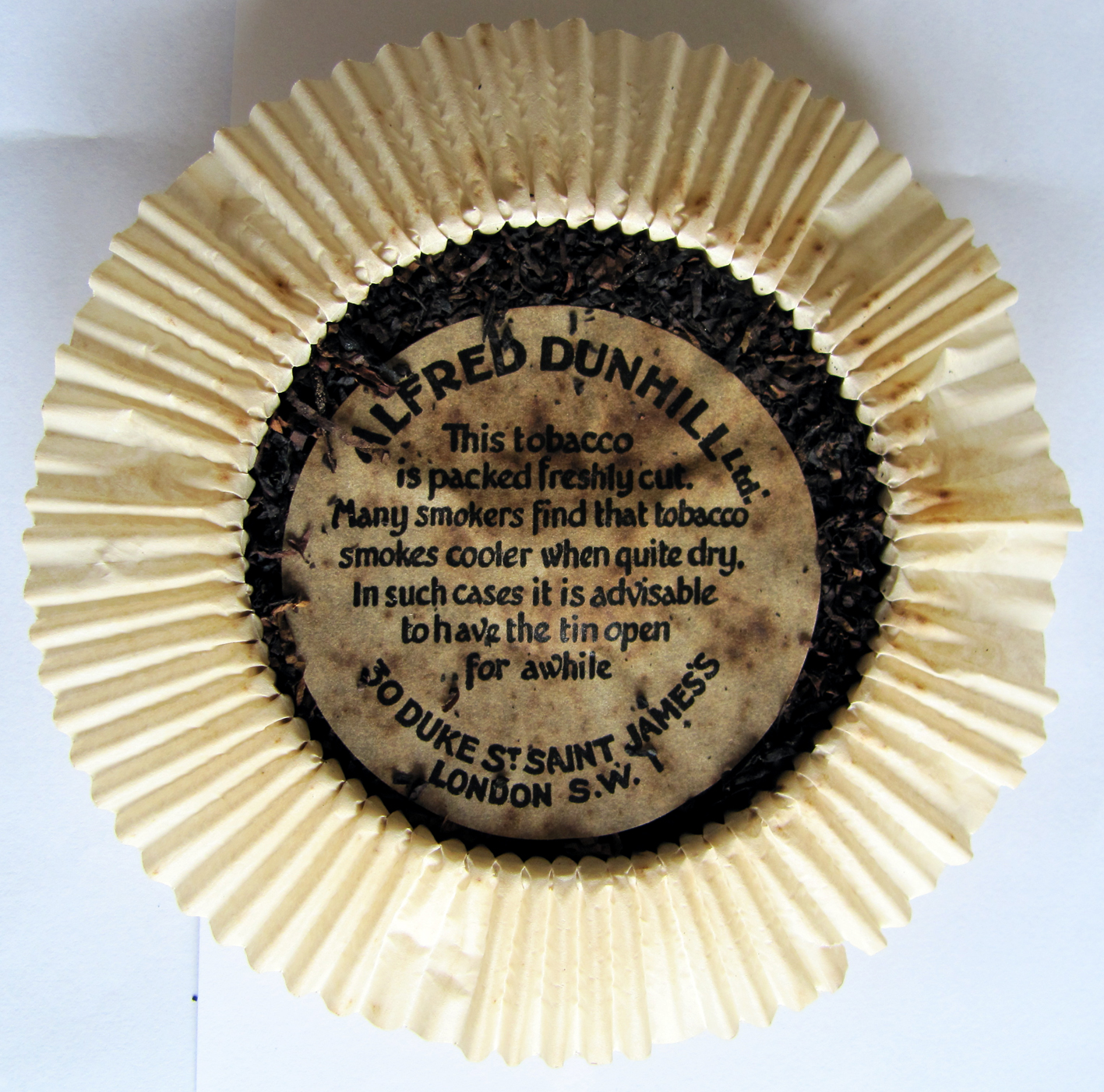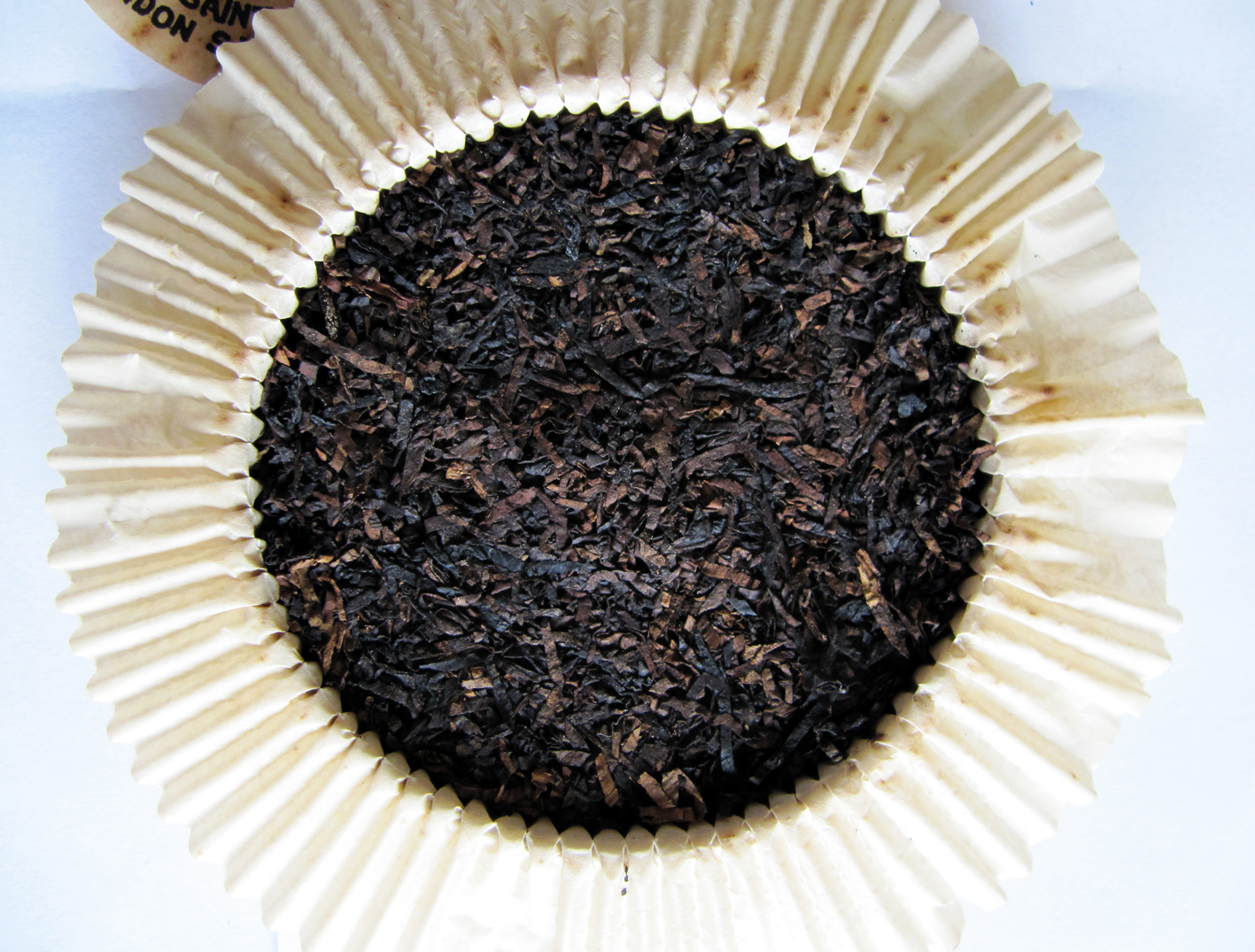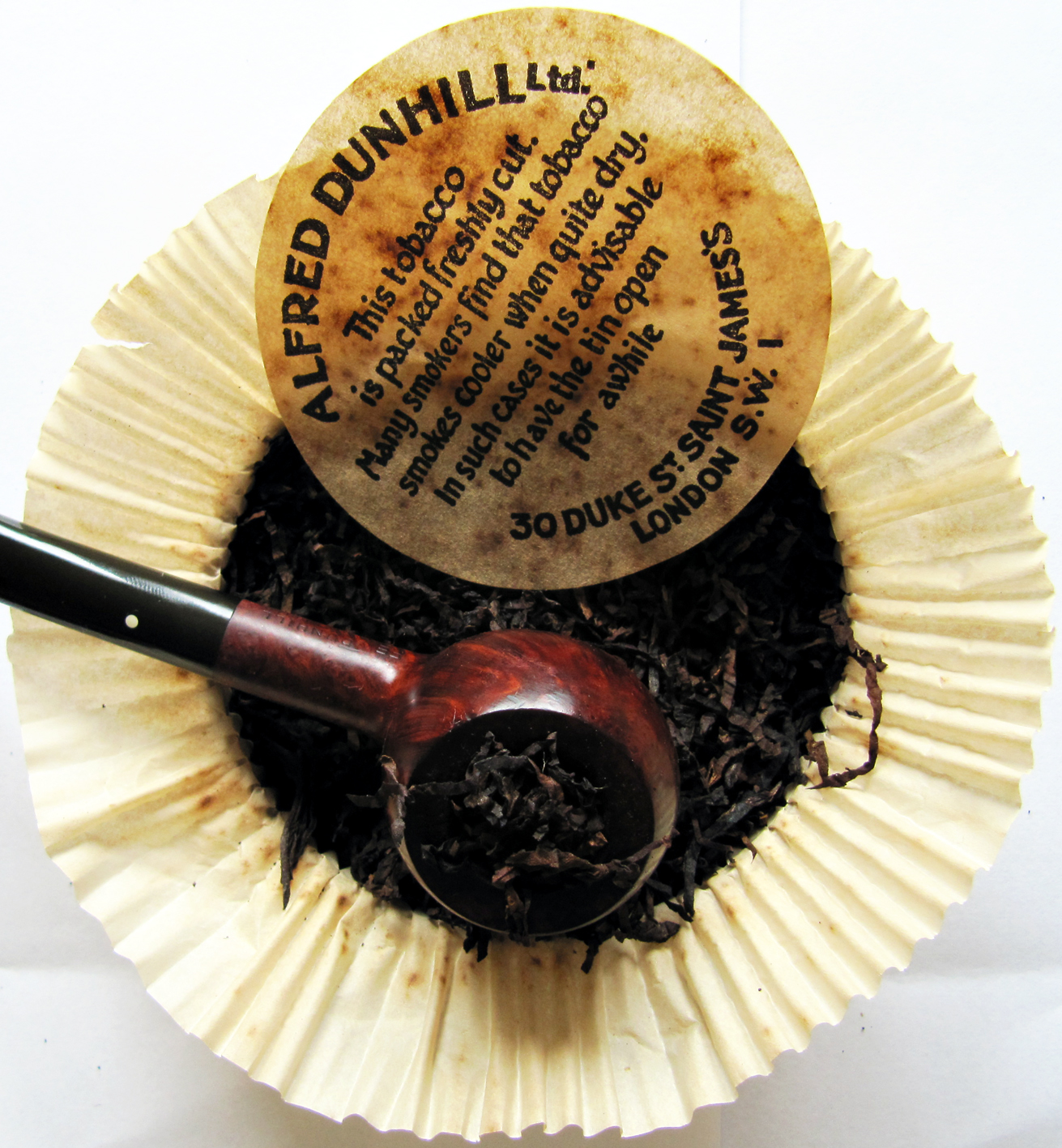September 19th it was once again time for one of my annual highlights: The Inter Tabac fair in Dortmund. For those of you who missed the blogposts I made of the visit the last couple of years; the Inter-Tabac is the leading and biggest trade fair of the world for tobacco products and smoking accessories. This year there were more than 500 exhibitors from over 50 countries who presented themselves in 5 huge exhibition halls. Renowned companies from all over the world presented trends and innovative tobacco products. This includes cigars, cigarillos, cigarettes, E-cigarettes, E-pipes, smoking accessories, pipes, pipe tobacco, shop equipment and spirits. Unfortunately the fair is for retailers, not for consumers. Luckily Fred, now mainly one of the retailers of Big Ben, was willing to drag me along once again. And I was not the only one, he also had asked Rob (forum name Robbie-San) to come along. Which was pretty convenient for me because I could drive together with him.
After a smooth journey we arrived at the Westfalenhallen in Dortmund. Fred texted me, he already was inside waiting for us. When Rob and I met him he was in the process of ordering some miniature pipes meant for a short smoke. A funny looking partly retractable thing but ehmm.. not for me. What was for me was the stand of the Scandinavian Tobacco Group where pipe-brands like Winslow, Peterson, Dunhill and Butz Choquin are shown. Once again Poul Winslow was not there but we bumped in to him later. Fortunately I was just smoking one of his pipes which he immediately recognized. We shook hands and I thanked him for doing what he does best: the making of most excellent smoking pipes. Back at the stand I shook my head in disbelief that Butz Choquin still had the same bright fluorescent yellow and dark blue pipes with yellow spots. As an employee at a marketing department I wonder at which group of people those awful creations are marketed. Well, perhaps it is also a case of “tastes differ”.. Being a big fan of everything that has to do with Ireland Rob already was talking with one of the Peterson salesmen. Apparently they had some new tobaccos: Founder’s Choice (the re-release of the successful 2015 St. Patricks Day tobacco), Signature Flake (in the vein of Capstan) and Original 1865 Mixture (a classic English blend). Dunhill had some special pipes with a silver cap in the form of a bulldog. Really beautiful but also really expensive..
The next stop was the stand of Dutch pipe-factory Gubbels, makers of brands like Big Ben, Hilson and Bentley. This year they had an innovative new pipe: a short reverse calabash named “Curvy“. Not my kind of model (once again tastes differ huh?) but I recognize and applaud the will of Gubbels to innovate and be different than the rest, to think outside the box. And they were well rewarded, I heard they had so many orders that they could barley cope with the production. For me there also was another reason to visit the Gubbels stand. I am busy again with a new forum tobacco for the Dutch/Belgian Pipe Smokers Forum. This one will be made by the immortal house of Samuel Gawith but… The Netherlands had no importer for the brand. HAD, because Gubbels almost certainly reached an agreement with the old British brand to import their wonderful tobaccos. Elbert Gubbels jr. was very happy about the coming collaboration and of course Fred and I added fuel to his enthusiastic flames.
While walking the appetite for a chair, something to drink and to smoke arose so like last year we headed towards the stand of Dan Tobacco. We were warmly greeted and the lovely daughter of director Heiko Behrens immediately asked what we wanted to drink. She even made quite an effort to arrange some earl grey tea for Rob. They had 3 new offerings: one I forgot (sorry!), one which smelled like winegums (not my cup of tea) which name is Tumblin’ Dice and one with a bergamot flavour called “Jirsa, magister Kelly’s mixture”, interesting! So we all filled our pipes with the Jirsa blend and to be honest, it surprised me in a positive way. Last year I smoked a then new mixture called Choo Choo Train and I did not like it much. It bit me like Ellen on a wild night and just.. No.. The Jirsa blend behaved very well and halfway the bowl the subtle but clear taste of bergamot prevailed. Miss Behrens so much liked to see us enjoying the new mixture that we were all gifted a tin! Besides that she made small sample-bags of all kinds of tobacco for us to enjoy after the fair. Suddenly Michael Apitz appeared, responsible for creating many of the aromatic tobaccos of DTM. And a walking encyclopaedia of everything that has to do with pipes and tobacco. He sat down with us and immediately an interesting conversation followed about how to store your tobaccos for a long time. Apparently he now and then turns a tin upside down and let it stay like that for a while to evenly distribute the little oxygen inside it. Also an older man joined us for a short while. A real character with vocal chords which have seen lots of tobacco and spirits. “I am the least known pipe-maker of the world!” he croaked. He had brought some pipes of his own making with him and showed them. “They are rejects, I only smoke those, never the ones I sell.” And even those rejects looked amazingly beautiful. He had a straight grain which he had been smoking for 20 years which had a wonderful brown patina. And I still don’t know his name..
 We had gotten so hungry so we went outside looking for the stand that sold heavenly grilled mega-burgers last year. And it was not there! The bastards! Leaving me standing there with an empty belly! Fred and Rob gently guided me back inside while I kept on swearing in German.. Donnerwetter! Apparently some of the catering had moved to a (non-smoking…) part of one of the halls. We found a stand there that also sold burgers but sadly they were not as big and tasty as those of last year. And the price! 9 euros for a double cheese burger! Grrrrr… And on top of that some Chinese bloke sneakily tried to nick my chair while I was waiting in the queue. My flaming eyes communicated the Chinese words for “keep your f***ing hands off!”..
We had gotten so hungry so we went outside looking for the stand that sold heavenly grilled mega-burgers last year. And it was not there! The bastards! Leaving me standing there with an empty belly! Fred and Rob gently guided me back inside while I kept on swearing in German.. Donnerwetter! Apparently some of the catering had moved to a (non-smoking…) part of one of the halls. We found a stand there that also sold burgers but sadly they were not as big and tasty as those of last year. And the price! 9 euros for a double cheese burger! Grrrrr… And on top of that some Chinese bloke sneakily tried to nick my chair while I was waiting in the queue. My flaming eyes communicated the Chinese words for “keep your f***ing hands off!”..
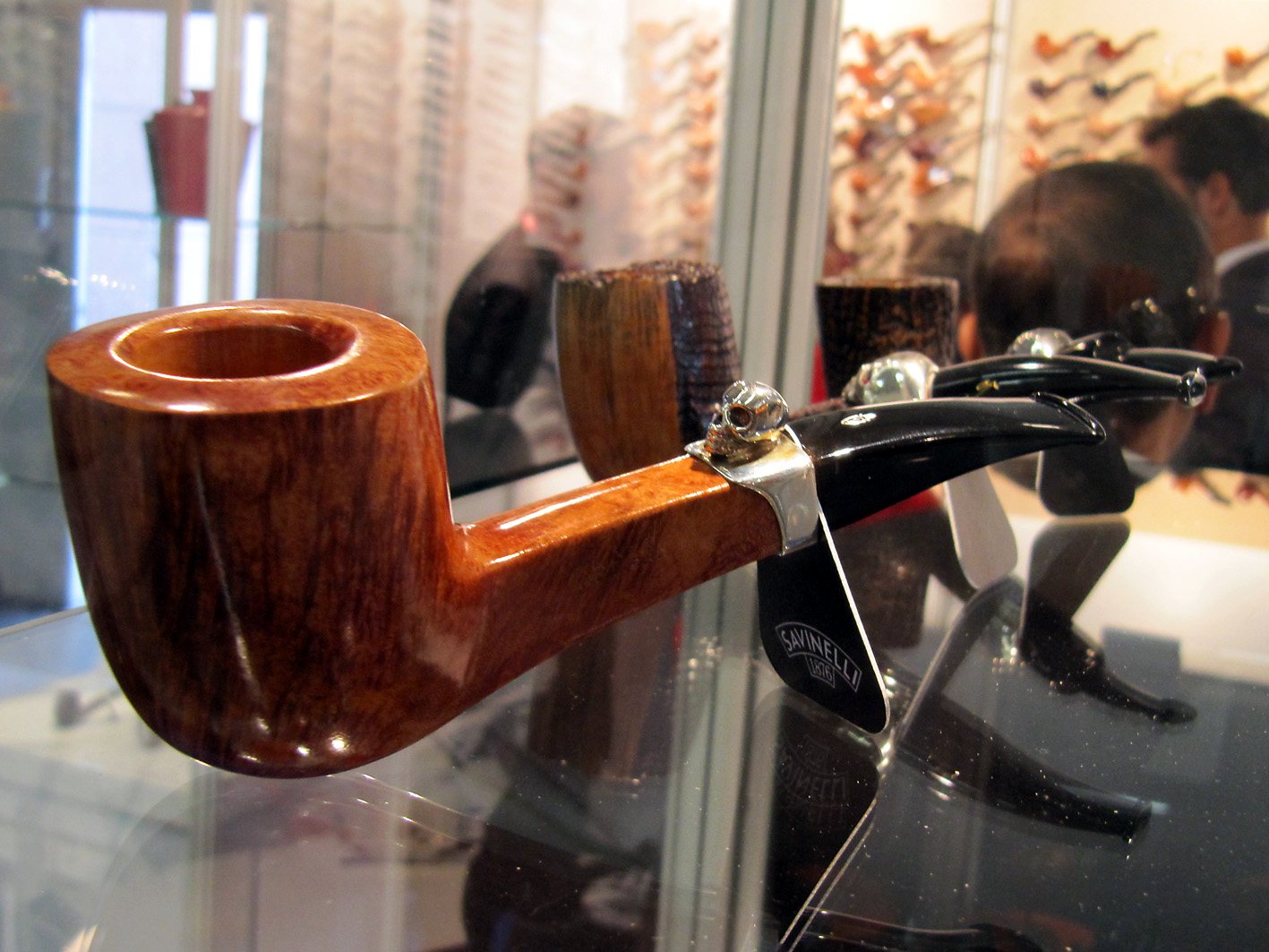 Rob loves Savinelli pipes so that was the next stand we went to. He had a malfunctioning mouthpiece and told that that to the friendly saleslady. Of course this was not a problem for her, she told Rob to send the pipe to Italy with specific instructions and then all would be fixed. Savinelli also had some really cool looking pipes with a silver skull ring that I really liked. So back home I looked up the prices and ehmm.. Nevermind.. Waaaaay out of my budget.. 1500 – 1700 euros… They also had pipes in the shape and colours of a football. No not a soccer-ball, a football. Not really my cup of tea.
Rob loves Savinelli pipes so that was the next stand we went to. He had a malfunctioning mouthpiece and told that that to the friendly saleslady. Of course this was not a problem for her, she told Rob to send the pipe to Italy with specific instructions and then all would be fixed. Savinelli also had some really cool looking pipes with a silver skull ring that I really liked. So back home I looked up the prices and ehmm.. Nevermind.. Waaaaay out of my budget.. 1500 – 1700 euros… They also had pipes in the shape and colours of a football. No not a soccer-ball, a football. Not really my cup of tea.
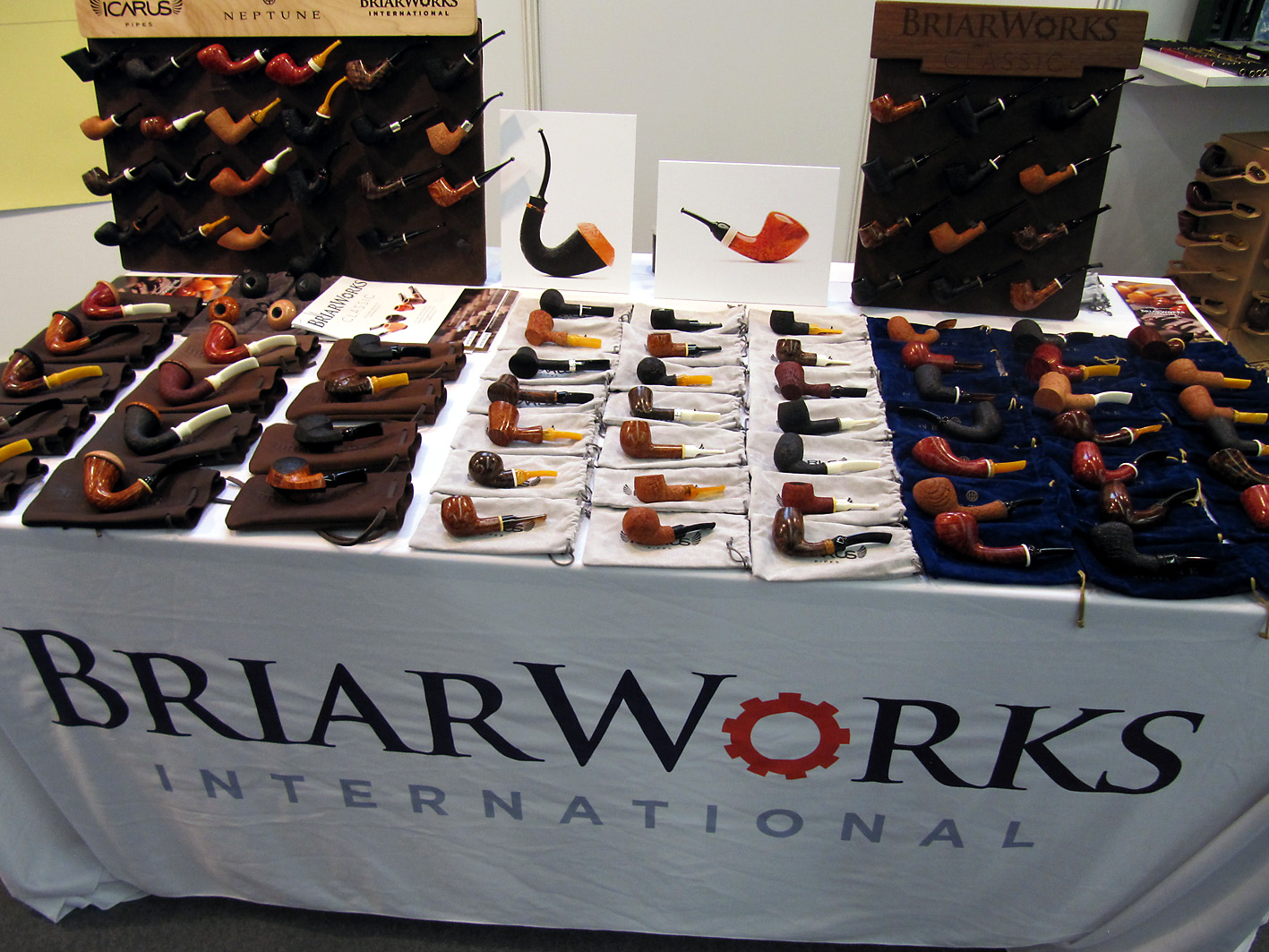 After seeing a lot of other Italian pipe brands we ended up at the stand of BriarWorks International. This year they are making the 2016 Dutch/Belgian Pipe Smokers Forum forum-pipe. Very nice folks at the stand and while I held the forum-pipe model in my hands I slightly regretted not ordering one. We moved on besides stands of Mr. Brog and Chacom. One of Rob’s favourite pipes is a Chacom so he thanked the salesman for making such excellent pipes and in return the salesman thanked Rob for buying them. We shuffled past the stand of Samuel Gawith, I had to speak with Bob Gregory about the coming forum tobacco but alas, he was busy making advances on an Asian looking woman who apparently was interested in his.. Tobaccos.. As always the space of the stand was shared with Ian Walker from Northern Briars. While chatting away Rob pulled out his beloved Chacom and sighed: “I wish I had another one..” Being the businessman that he also is Ian Walker grabbed his sketchbook and began drawing the Chacom from different angles. When he was done he named an absolutely reasonable price and asked for Rob’s email. I wonder what will come out of this.
After seeing a lot of other Italian pipe brands we ended up at the stand of BriarWorks International. This year they are making the 2016 Dutch/Belgian Pipe Smokers Forum forum-pipe. Very nice folks at the stand and while I held the forum-pipe model in my hands I slightly regretted not ordering one. We moved on besides stands of Mr. Brog and Chacom. One of Rob’s favourite pipes is a Chacom so he thanked the salesman for making such excellent pipes and in return the salesman thanked Rob for buying them. We shuffled past the stand of Samuel Gawith, I had to speak with Bob Gregory about the coming forum tobacco but alas, he was busy making advances on an Asian looking woman who apparently was interested in his.. Tobaccos.. As always the space of the stand was shared with Ian Walker from Northern Briars. While chatting away Rob pulled out his beloved Chacom and sighed: “I wish I had another one..” Being the businessman that he also is Ian Walker grabbed his sketchbook and began drawing the Chacom from different angles. When he was done he named an absolutely reasonable price and asked for Rob’s email. I wonder what will come out of this.
 Like every year German pipe-brand Vauen had made an innovative pipe. Last year they had a black diamond shaped pipe fittingly called “Diamond“ Now their newest creation was called “Spin“. A pipe that at first looks like a big joint but because of a rotating bowl can be used normally. A nice feature, but in my personal opinion noting special. What was special once were the Lord of the Rings pipes made by Vauen. Sadly they lost the rights to use the LOTR name so instead they founded the “Auenland” series. Really good looking pipes, absolutely, but I have been searching for a LOTR Bilbo model for years and I can’t find one for a decent price. So every year I ask the Vauen salesmen the same thing: Can you please bring out the Bilbo model under another name? And each year the polite answer is the same: no..
Like every year German pipe-brand Vauen had made an innovative pipe. Last year they had a black diamond shaped pipe fittingly called “Diamond“ Now their newest creation was called “Spin“. A pipe that at first looks like a big joint but because of a rotating bowl can be used normally. A nice feature, but in my personal opinion noting special. What was special once were the Lord of the Rings pipes made by Vauen. Sadly they lost the rights to use the LOTR name so instead they founded the “Auenland” series. Really good looking pipes, absolutely, but I have been searching for a LOTR Bilbo model for years and I can’t find one for a decent price. So every year I ask the Vauen salesmen the same thing: Can you please bring out the Bilbo model under another name? And each year the polite answer is the same: no..
At the Mac Baren stand I had 2 things to do: sample a bit of their new tobaccos and meet PipesMagazine.com radio-show host Brian Levine who did an interview with me some time ago. Tobacco-expert Per Jensen was busy with a retailer so I looked around if I saw Brian and found him at the entrance. He did not immediately recognize me, in real life I am much better looking than on my pictures *ahemmm*, but when he did he warmly greeted me. We all sat down and a girl provided drinks. We talked a bit about my blog, I showed him my old Samuel McLardy pipe and we just had a great time, Brian really has a wonderfully wicked sense of humour. Gradually the conversation drifted toward their new tobaccos: HH Pure Virginia and HH Bold Kentucky. Since Per Jensen was still busy Brian asked me to wait, hurried to the side of the stand and came back with a tin of HH Pure Virginia and HH Bold Kentucky. Those were for me! Thanks Brian! We talked further and the subject came on the new brands Mac Baren recently acquired. Amongst those brands is a classic Dutch one: Amphora. So Brian asked if I would like to have some pouches of it. Ehhr, sure, yes!! Thanks again! Apparently with the new brands Mac Baren also acquired some nasal snuff tobaccos. They did not even know that until just before the Inter Tabac so they had to quickly buy some of the snuff in England. The last couple of months I now and then sniff some nasal snuff and Rob also likes to do that very much. So we took it upon ourselves to test the new additions to the Mac Baren product range. Must have been a funny but perhaps disturbing sight to see a couple of full grown men snorting away like there was no tomorrow. When Per Jensen finally shortly joined us I dared to ask him if it was possible to visit and see the factory. Normally they don’t do that but if I mail him far enough in advance it surely could be done! Of course we thoroughly thanked Brian and Per before we left the stand. Great guys!
Inside the posh and luxurious stand of Kohlhase & Kopp it was busy. We had a quick look at some pipes, they had a nice rack of Wallensteins, but for the rest there was nothing special to find. So we decided to see if Bob Gregory was available at the Samuel Gawith stand, and he was. He did not have much time, the next appointment was already breathing in our necks, but I did not need long to explain to him what I would like with the forum tobacco. To him it all sounded good, it all could be done. Great! He gave me his email and before we shook hands and said goodbye Rob managed to secure a tin of Celtic Talisman snuff. Talking about snuff, we even saw at a stand that they had the famous snuff offerings from the renowned Dutch snuff-mills. Cool! But more about those in a coming blog.
After all the pipe-smoking and sniffing we all felt like trying out a water-pipe. The espresso water-pipe company of last year also was present so we decided to sit down there. We were the only customers at that moment so the girls were glad to see us and fired up the shishas. Fred once again had troubles to get the water-pipe going but Rob and I were happily puffing away. We tried all kinds of flavours but both of us liked the regular apple-taste best. One of the girls asked if we regularly smoked shisha, no, but we do smoke pipe often! She got a bit intrigued so Rob pulled out his pipes and tried to impress the (poor) girl. He even got the girls so far they posed with him for a picture, the lucky bastard! Oh yes, the girls.. Last years I very much enjoyed the sights of scantily dressed ladies trying to promote products or just sitting in front of stands to attract customers. But now it seemed that there was some kind of dress code.. Most girls were very neatly dressed, no cleavage whatsoever, no ultra-mini skirts. Only one (water-pipe) stand had girls that showed some more flesh, but still.. So vendors of the Inter Tabac, next year I hope I can feast my eyes once again on pipes, tobacco and scantily dressed girls! Thank you!
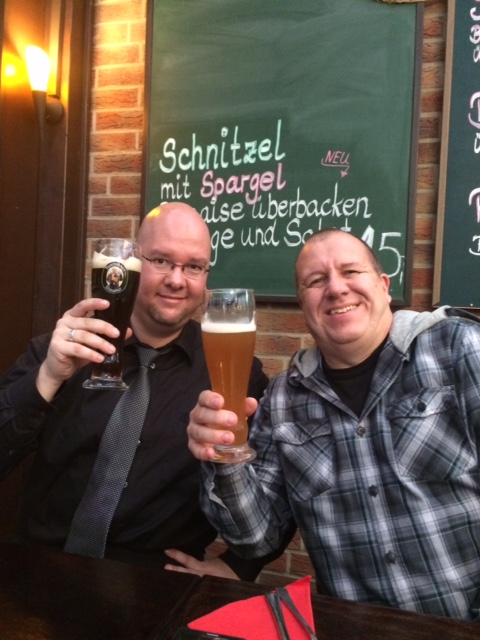 Of course the day ended too soon, just before 6 o’clock the loudspeakers told us to head to the exits. Brian had asked if we wanted to drink a beer with him at his hotel but to be honest I forgot the name of it… Next year Brian! Besides that we all were very hungry so we took off in search of a restaurant. We did not wanted to eat something in Dortmund but in a smaller town (restaurants are often cheaper there). So we at random picked a town when driving on the highway. It was called Herne and when we got there we went to the first decent looking place to eat, which proved to be a Greek restaurant. And an excellent one! Good beer, lots of meat for a reasonable price, just perfect! All by all I was at home precisely at midnight. I can’t remember hitting the bed but I sure had some nice tobacco dreams.
Of course the day ended too soon, just before 6 o’clock the loudspeakers told us to head to the exits. Brian had asked if we wanted to drink a beer with him at his hotel but to be honest I forgot the name of it… Next year Brian! Besides that we all were very hungry so we took off in search of a restaurant. We did not wanted to eat something in Dortmund but in a smaller town (restaurants are often cheaper there). So we at random picked a town when driving on the highway. It was called Herne and when we got there we went to the first decent looking place to eat, which proved to be a Greek restaurant. And an excellent one! Good beer, lots of meat for a reasonable price, just perfect! All by all I was at home precisely at midnight. I can’t remember hitting the bed but I sure had some nice tobacco dreams.
All pictures were made by Rob and myself.




